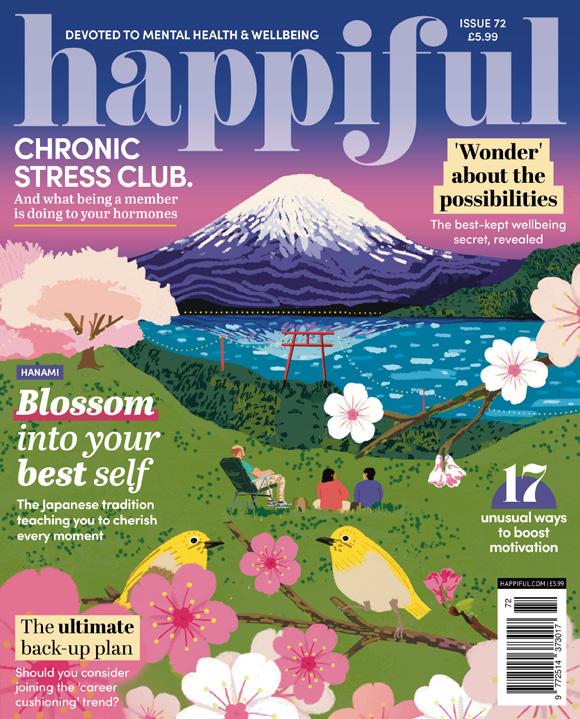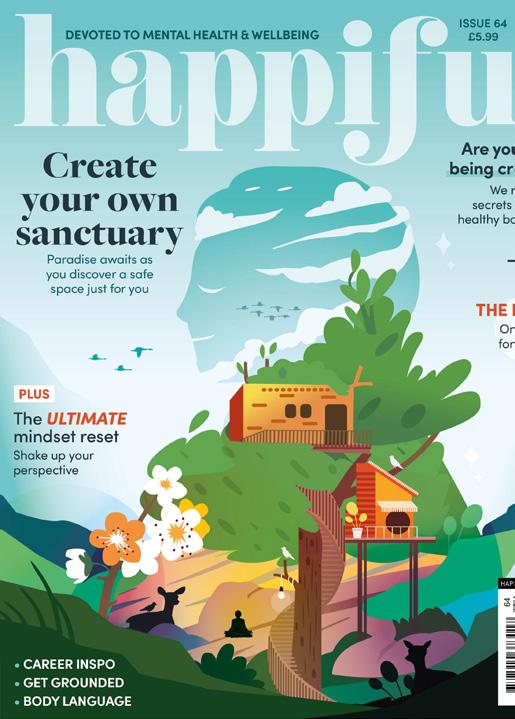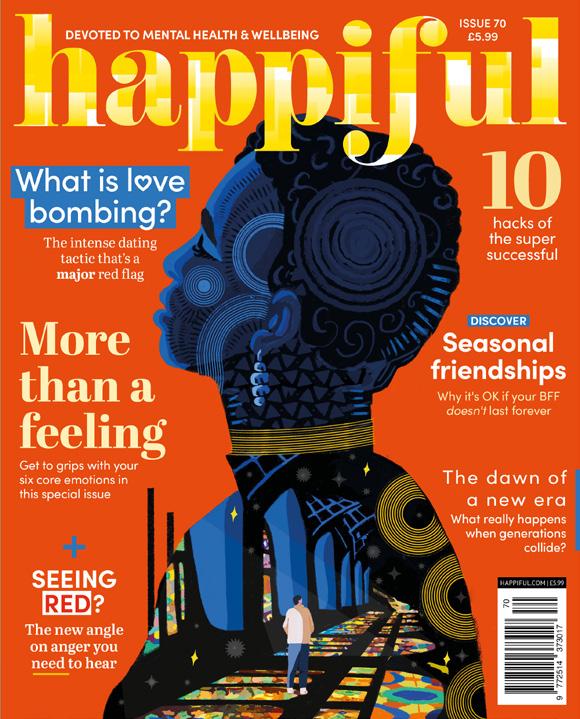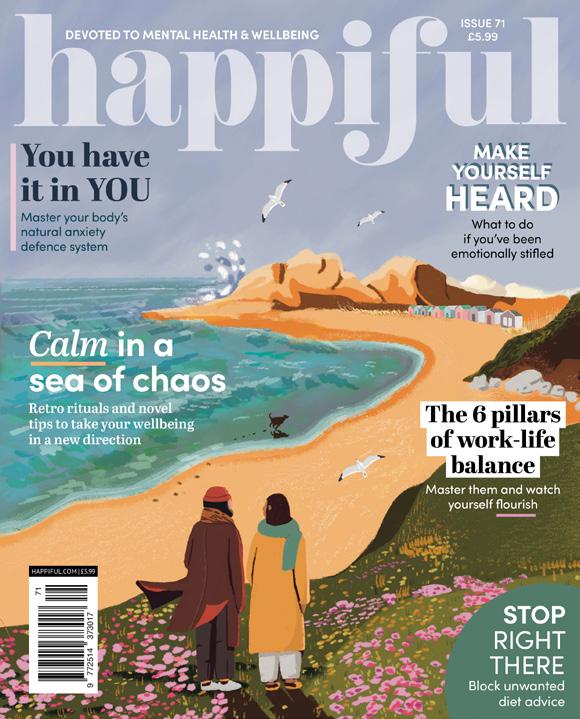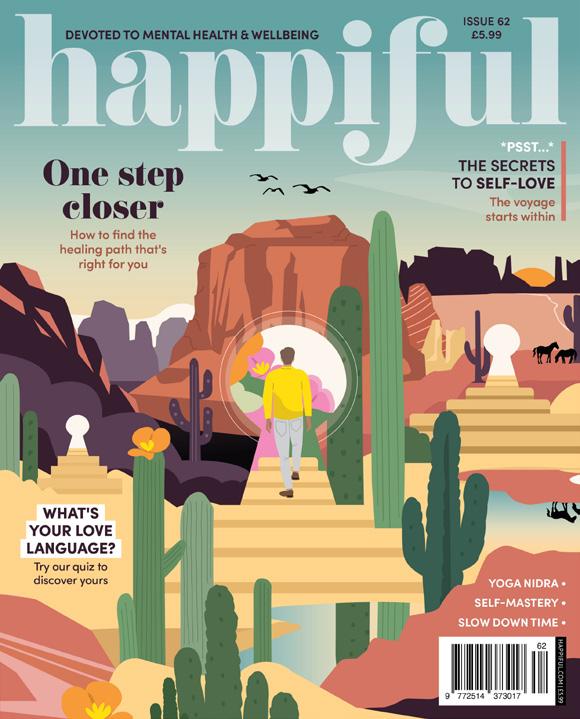
 Photograph | Joshua Mcknight
Photograph | Joshua Mcknight
“I have not failed. I’ve just found 10,000 ways that won’t work THOMAS A EDISON


 Photograph | Joshua Mcknight
Photograph | Joshua Mcknight
“I have not failed. I’ve just found 10,000 ways that won’t work THOMAS A EDISON
Do you ever have one of those moments where you’re at a mental standstill, completely blocked, stuck on a problem you can’t shake?
You might begin by mulling it over in your head, ruminating on all the possible solutions, and how things could play out.
But, with no clear answer, you escalate to rehearsing what you need to say (or wish you had said), imaginging how someone might react, then dread the impending disaster when everything will inevitably go against you…


The pressure builds, the problem looming over you, gaining momentum like a tidal wave about to crash. Until you finally have enough, and have no option but to take a break.
And, suddenly, that breathing space works wonders.
It blows away the cobwebs clouding your mind, with that moment of rest allowing your brain to reset. The wave of panic and confusion begins to ebb. Your entire perspective can seem to shift with a newfound clarity.
It’s a phenomenon that we’ve tried to encompass in this very issue: discovering how we can see the things that might have been right in front of our eyes the whole time in a
completely new light – and the powerful opportunities this can open up for us.
This could be taken quite literally with our explainer on ‘James Webbing’, which explores the relationship trend of viewing romantic connections (both budding and deep-rooted) through a new lens.
But, it also serves as inspiration for our empowering feature on good times vs goal-setting, teaching you to enjoy the journey, not just the destination, as well as in the hopeful possibilities of the concept of post-traumatic growth.
Looking at our wellbeing, emotions, and relationships, from a different angle could open up a whole new realm of possibilities for us, to grow and transform in ways we never thought possible.

And it all starts with an open heart and mind, allowing curiosity to lead the way.
Who knows what you might discover when you look at things from a new vantage point?
Happy reading,
At Happiful, inclusivity, representation, and creating a happier, healthier society are at the forefront of our mission. To find out more about our social and environmental pledges, visit happiful.com/pledges
W
F
I

14 What is ‘James Webbing?
Is it time you got a fresh perspective on dating and relationships?
17 Fire and fury
How scream therapy and rage rooms might be the key to calm
25 Sam Thompson
The reality star on how an adult ADHD diagnosis set him free
28 It’s tough at the top
How to have a healthy relationship with achievement
60 Post-traumatic growth
Could there be something positive waiting on the other side of adversity?
67 Put your best foot forward
9 positive ways to start your week
Food & health
31 Get a good gut feeling
41 An autoimmune journey
And how a diagnosis and the right support can shape the future
70 Sweet tooth? Tasty snacks for warmer weather
16 The perfect self-care plan
50 How to give compliments

83 Stop and relax
Explore your mind and what you need most with our journaling pages
20 5 ways to make a difference Unique ways to support charities
32 Rooting for you
Why reforestation projects are so essential & how to get involved

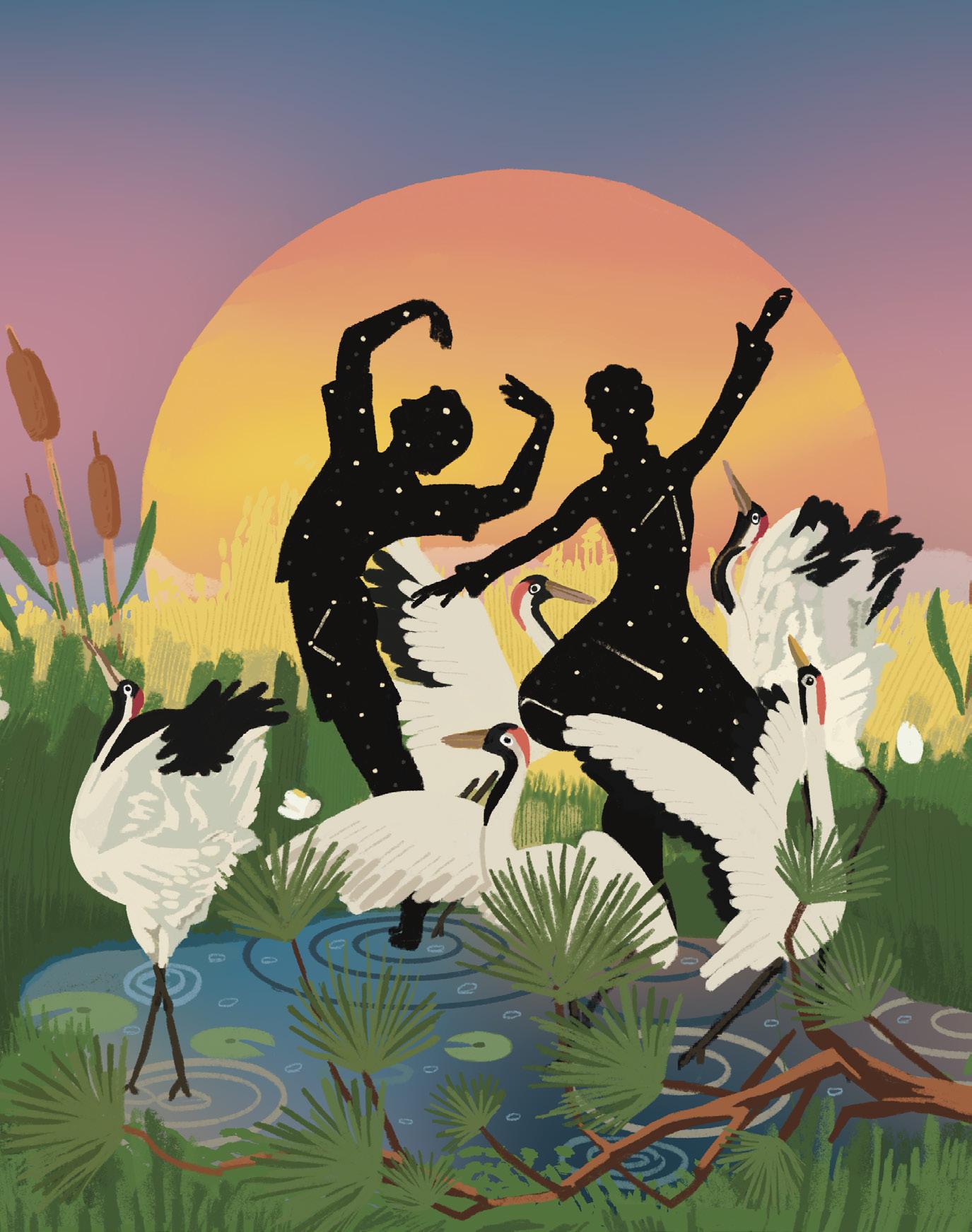
51 Dianne Buswell
The Strictly star on joy beyond dance
72 Help youngsters thrive
28 14 78
Our expert’s tips to get the students in your life set up for success
Every issue of Happiful is reviewed by an accredited counsellor, to ensure we deliver the highest quality content while handling topics sensitively.
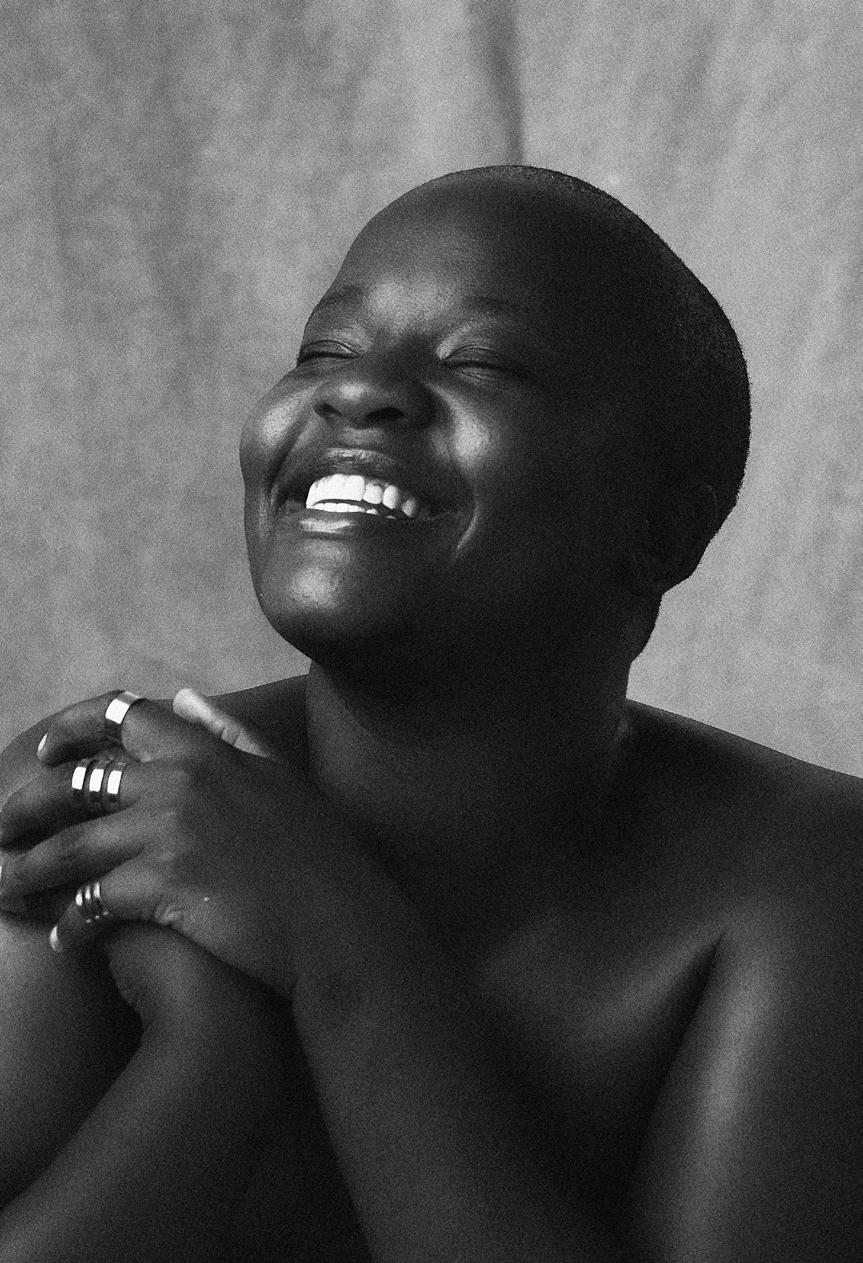



The journey of life can bring us joy and, equally, great challenges. This is the nature of it. A traumatic experience can be very difficult to recover from, due to the severity and complexity of emotional experiences. But, it is possible. Head over to p60 to explore the ways in which you can grow from trauma. Borne from adversity, your negative experience has wonderful potential to blossom into something new, allowing you to reach depths

Meet the team of experts providing information, guidance, and insight throughout this issue
KIERAN TOWNSEND
BA (Hons) Dip. NLP AC MHFA
Kieran is a youth development coach and mentor.
SUZANNE ANDEREGG
MSc RNut
Suzanne is a nutritionist supporting families and individuals.
ADRIAN JACKSON
DipHyp HPD IEMT CNHC (Acc)
Adrian is a cognitive hypnotherapist specialising in anxiety and depression.
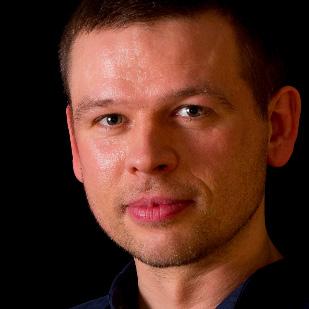
SANA KAMRAN
Dip.Couns MBACP
Sana is a counsellor, writer, and founder of INNATE Counselling and Psychotherapy.


NORA PORTNELL
Dip.Couns MSc MBACP
Nora is a person-centered therapeutic counsellor.
TOM BULPIT
BA (Hons) Dip. NLP AC MHFA
Tom is a person-centred counsellor and psychotherapist.

SHELLEY TREACHER
MA BACP
Shelley is a counsellor specialising in self-worth and anxiety.
CLAUDINE THORNHILL
NT (Dip CNM) mANP
Claudine is a naturopathic nutritionist and health coach.

JENNY WARWICK
PGDip BACP
Jenny is a counsellor specialising in relationships and family issues.
CLAIRE ELMES

BA (Hons) PGDip MANLP MBACP
Claire is a therapist and life coach specialising in balance.



CHANTAL DEMPSEY
D.Hyp LLB LLM NLP ACCPH
Chantal is a mindset coach who specialises in helping men and women create a life they love.
Join
Are you a wellbeing expert with valuable insight to share? Happiful professional membership includes opportunities to be featured in our award-winning magazine. Discover how to join by emailing us at professionals@happiful.com
EDITORIAL
Rebecca Thair | Editor-in-Chief
Kathryn Wheeler | Features Editor
Lauren Bromley-Bird | Editorial Assistant
Bonnie Evie Gifford, Kat Nicholls, Samantha Redgrave-Hogg | Senior Writers
Becky Banham | Content & Marketing Officer
Michelle Elman, Kieran Townsend | Columnists

Lucy Donoughue | Head of Multimedia
Ellen Lees | Head of Content

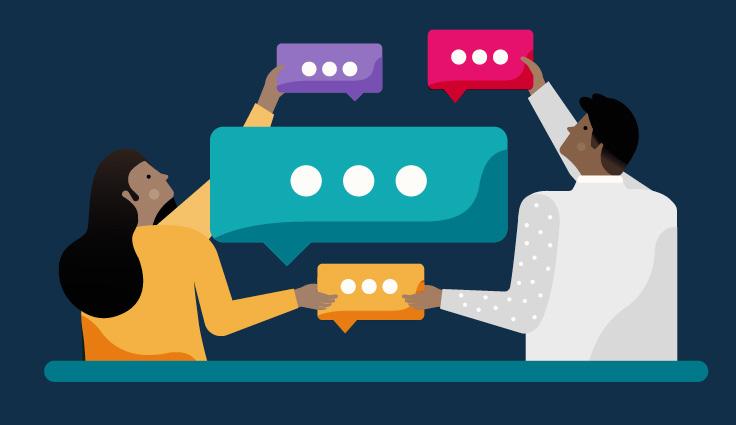
Keith Howitt | Sub-Editor
Rav Sekhon | Expert Advisor
ART & DESIGN
Amy-Jean Burns | Head of Product & Marketing
Charlotte Reynell | Creative Lead
Rosan Magar | Illustrator
COMMUNICATIONS
Alice Greedus | PR Manager
CONTRIBUTORS

Emily Wilson, Gemma Calvert, Victoria Stokes, Dawn Mitchell, Emma Johnson, Claudine Thornhil, Fiona Fletcher Reid, Jenna Farmer, Anna Gaunt, Nicki Bannerman, Claire Campbell-Adams, Katie Scott
SPECIAL THANKS
Tom Bulpit, Adrian Jackson, Nora Portnell, Claire Elmes, Suzanne Anderegg, Shelley Treacher, Sana Kamran, Jenny Warwick
MANAGEMENT
Aimi Maunders | Director & Co-Founder
Emma Hursey | Director & Co-Founder
Paul Maunders | Director & Co-Founder
SUBSCRIPTIONS
For new orders and back orders, visit shop.happiful.com, or call Newsstand on +44 (0)1227 277 248 or email subenquiries@newsstand.co.uk
CONTACT
Happiful, c/o Memiah, Building 3, Riverside Way, Camberley, Surrey, GU15 3YL Email us at hello@happiful.com
HAPPIFUL FAMILY
Helping you find the help you need. Counselling Directory, Life Coach Directory, Hypnotherapy Directory, Nutritionist Resource, Therapy Directory
If you are in crisis and are concerned for your own safety, call 999 or go to A&E
Call Samaritans on 116 123 or email them at jo@samaritans.org
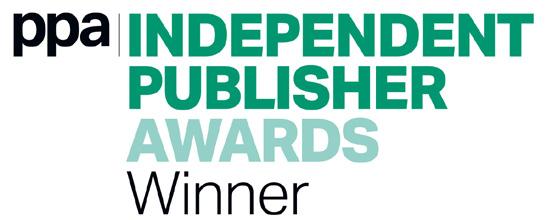
SANEline
SANEline offers support and information from 4pm–10pm: 0300 304 7000
Mind
Mind offers advice Mon–Fri 9am–6pm, except bank holidays: 0300 123 3393. Or email: info@mind.org.uk
Switchboard
Switchboard is a line for LGBT+ support. Open from 10am–10pm: 0300 330 0630. You can email: chris@switchboard.lgbt
p25
To learn more about ADHD, and to access advice and services, visit adhdfoundation.org.uk
If you want to learn more about nutrition, and create a personalised plan, connect with a professional using nutritionist-resource.org.uk p41
p60

For information and support if you or a loved one is experiencing PTSD or C-PTSD, visit ptsduk.org
Our two-for-one tree commitment is made of two parts. Firstly, we source all our paper from FSC® certified sources. The FSC® label guarantees that the trees harvested are replaced, or allowed to regenerate naturally. Secondly, we will ensure an additional tree is planted for each one used, by making a suitable donation to a forestry charity. Happiful is a brand of Memiah Limited. The opinions, views and values expressed in Happiful are those of the authors of that content and do not necessarily represent our opinions, views or values. Nothing in the magazine constitutes advice on which you should rely. It is provided for general information purposes only. We work hard to achieve the highest possible editorial standards, however if you would like to pass on your feedback or have a complaint about Happiful, please email us at feedback@happiful.com. We do not accept liability for products and/or services offered by third parties. Memiah Limited is a private company limited by shares and registered in England and Wales with company number 05489185 and VAT number GB 920805837. Our registered office address is Building 3, Riverside Way, Camberley, Surrey, GU15 3YL.
One undeniable truth is that finding the right help for each individual is a journey – what works for one of us will be different for someone else. But don't feel disheartened if you haven't found your path yet. Our Happiful family can help you on your way. Bringing together various arms of support, each of our sister sites focuses on a different method of nourishing your wellbeing – from counselling, to hypnotherapy, nutrition, coaching, and holistic therapy. Download our free Happiful app for more.

Every day, technology is changing our lives in new and exciting ways and, now, it could help us to address some of the biggest challenges we face in our society.
Sexual harassment on public transport is, unfortunately, a real problem experienced by many. According to a survey commissioned by UN Women UK, 71% of women in the UK have experienced some form of sexual harassment in a public space. And many bystanders feel unable to intervene – while others are not able to identify some of the most frequent forms of sexual harassment, including sexual comments, intrusive staring, and persistent questioning.
In a bid to make the rail lines a safer space for all, Rail Delivery Group and the British Transport Police created a new VR experience, trialled at Waterloo Station, London, in April. It aimed to tackle sexual harassment by teaching people to recognise how these situations can occur, and to empower them to intervene in a safe way.

“Knowing what to do is a big motivator for bystanders, as harmful acts are witnessed every day,” says Graham Goulden, bystander intervention expert, and ex-criminal chief investigating officer for Police Scotland. “Some people don’t realise that harm is taking place, whereas others, rightly so, fear for their own safety. Not only do we help people see
the harm in the likes of language and other behaviours, but we also provide them with tools to act. One person can make a difference, so it’s important that people believe that they can help.”
To report sexual harassment on public transport, text 61016, download the Railway Guardian app, or call 0800 40 50 40
Writing | Kathryn WheelerFor those families who are experiencing financial hardship as a result of the cost of living crisis, it can be incredibly difficult to provide the basic necessities for their children, let alone new toys. But, despite these challenges, there are people who have stepped up to help those in need, including two children who wanted to make a difference.
The kind-hearted sisters from Chesterfield, Sage (12) and Erin (8) first began collecting cereal, tinned food, and selection boxes
to give to Chesterfield Food Bank over the Christmas holidays, and it was this selfless act of kindness that encouraged them to collect toys and clothes for the children in Derbyshire who would otherwise have gone without.
They began collecting bags full of donated items, which quickly became enough to fill the bathtub at their family home. Their mother, Mel Stubbs, said: “I’m really proud of them. It’s lovely that they’re giving back to charity, because they are aware we are
going through the crisis, and a lot of families are struggling because of the rising cost of living.”
And the kindness didn’t stop there. Both Erin and Sage attend separate schools, which are a part of the Cavendish Learning Trust, which recently raised more than £12,000 for the community by organising a comedy evening hosted by husband and wife duo, comedians Jon Richardson and Lucy Beaumont. It turns out, even if you’re little, you can still do a lot.
Writing | Lauren Bromley-Bird
Sipping tea, while listening to stories from our elders, really helps to combat loneliness – so it’s no surprise that independent charity Adopt a Grandparent is winning support. Working with care homes across the UK, Adopt a Grandparent has nearly 100,000 volunteers signed up to ‘adopt’ an elderly person in need of a regular, friendly chat. But, the charity needs funds in order to continue. And, now, named one of Co-op’s charities of the year, Adopt a Grandparent will benefit financially from shoppers who choose to support them via Co-op’s Local Community Fund – as the Co-op donates 1p of every £1 spent on selected products/services via this fund to a range of local causes.
Speaking about the work they do, founder of Adopt a Grandparent, Shaleeza Hasham, explains how the pandemic had an impact on older people.
“Loneliness became a huge crisis during the pandemic. The health risks related to loneliness include a higher risk of mental and physical conditions, including heart disease, depression, anxiety, dementia, and premature death. By helping volunteers to virtually ‘adopt’ a grandparent, we hope to alleviate loneliness and generate companionship in as many communities as possible, with both parties benefiting from the enriching relationships.”
If you want to donate to the charity through the initiative
(running until October 2023) you’ll need to become a Co-op member, which costs £1. And, if you fancy ‘adopting’ a grandparent, visit adoptagrandparent.org.uk. So, put the kettle on, it’s time to chat.
Writing | Kat Nicholls
Who’s guilty of not making time for self-care? It’s something we know we should do, but the weeks fly by and we can easily get lost on the conveyor belt of life. That said, we might be more tempted to steal some more mindful minutes if we knew how quickly we could see results.
In fact, practising mindfulness just once a week for eight weeks helped graduate students feel significantly more positive and focused, according to a new study carried out by the University of Wisconsin.
The research, published in the science journal PLOS ONE, which included two studies involving 215 students across six academic terms, showed consistently positive results. The mindfulness participants reported fewer negative emotions, and improved emotional wellbeing, after training in healthy coping strategies, brain neuroplasticity, mindfulness meditation, and cognitive exercises, in just a few weeks.

Susan Hagness, study co-author and professor of computer engineering, said: “How do we help our students develop resiliency and a really robust toolbox to flourish in an environment where there’s inevitably going to be stress? Small investments in self-care can have long-term rewards.”
So next time you put off taking a little ‘me-time’, just remember how even making even a small effort can go a long way.
Writing | Samantha Redgrave-HoggA little bit of mindfulness can go a long way
Complete the grid so that the numbers in each row and column add up to the values at the edge. You can use the digits one to nine, but remember that each one can only be used once in each sum! Watch out – this is a hard one!
Complete the pyramid by solving the clues below, filling in each row with one letter per box. The trick is that each row uses all the same letters as the row before it, plus one new letter – but the order can change. Time to test your vocabulary!
Visit the ‘Freebies’ section onshop.happiful.comand more!
Bassenthwaite, in the Lake District, has been named the most peaceful place in the UK
To raise awareness of World Down’s Syndrome Day in March, Northamptonshire sweet shop worker Billy, who has Down’s Syndrome himself, pitched to his bosses at The Shop the idea of selling bags including all his favourite treats, and was met with incredible support. More than 800 of ‘Billy’s Pouches’ have been sold so far, raising more than £800 for the Down’s Syndrome Association! And they’re still going – you can support The Shop and order Billy’s Pouch online at www.sweetfutures.shop
Supermarket Aldi pledges to have all fruit and veg eco-certified (with the LEAF Marque) by the end of 2023
69-year-old Cha Sa-Soon from South Korea has finally passed her driving test – after 960 attempts!
If you’re in need of a motivational boost to get out for that morning run, we’ve got just the thing. In the first study of its kind to explore both the effects of sleep duration and physcial activity, research from Guangzhou Medical University, China, found that following the WHO recommended 150 minutes of moderate exercise a week was actually able to counter the effects of bad sleep (which include an increased chance of early death).
A 32-year-old tech billionare has adopted 40+ abandoned horses! John Collison, who co-founded Stripe, has welcomed the animals on to his 1,100acre estate in Ireland to roam free.
In a sign that our self-esteem might need some TLC, a poll by Origym found that one in four Brits, rising to nearly half of Gen Z, wouldn’t post an unfiltered or unedited selfie. In fact, 40% of those aged 16 to 25 reported wanting to alter their facial appearance because of social media filters.
With an initiative offering free sessions for those with dementia, Seckford Golf Club, in Suffolk, has been named Club of the Year 2023 by England Golf. Manager Tony Pennock was inspired by his own parents’ experiences with the disease, noting that, for those who played the sport previously, you “put a club in their hand, and it transforms them”.
Affectionately known as ‘dad jokes’, cringe-worthy puns could actually be a sign of good parenting. Writing for the British Psychological Society, Marc Hye-Knudsen, a researcher of humour, and a lab manager at Aarhus University’s Cognition and Behavior Laboratory, explains that this ‘teasing’ helps children to build resilience, gain impulse control, and supports emotional regulation as their embarrassment limits are tested.
Plans are in the works for London to get its first Area of Outstanding Natural Beauty
Friendship knows no bounds, or timezones apparently, as a pair of 81-year-old besties set out on a trip around the globe. Starting their adventures in January, they relayed their travel tales on their blog, ‘Around the World at 80’, and amassed a legion of fans. Sandy Hazelip and Ellie Hamby, from Texas, embarked on their trip exploring far-flung places including Antarctica, Easter Island, Argentina, Finland, Zambia, Nepal, and Japan. But Australia is where they concluded their trip of a lifetime, having visited 18 countries and all seven continents!
Animal rescues all do a wonderful job, but a particular charity really does seem to be the cat’s pyjamas. The Shropshire Cat Rescue, in Shrewsbury, has created a ‘Moggies Retirement Village’, with mini cottages and well-kept gardens, for 17 of its golden oldies (though a few youngsters have made it home, too). The aim is to support older felines with health conditions, or who need more regular treatment, to ensure they live out their years in comfort.
Any fans of Jane Austen’s Pride and Prejudice will know the power of seeing someone in a new light. When protagonist Lizzie Bennet sees Mr Darcy’s softer, fiercely loyal side (and, let’s be honest, his massive house), everything changes, and ‘happily ever after’ ensues. And, the latest dating trend for 2023 is barking up a similar tree.
‘James Webbing’ – getting the name from the James Webb space telescope – refers to seeing someone through a new lens, and that fresh perspective spuring our romantic interest. And it makes total sense that this could be the case. We humans are multifaceted beings. Our personalities are a complex web of patterns, brought together by all the things we’ve been through so far, the moods we flow through, our values, and the fundamental things that make us the individuals we are. The trouble is, modern-day dating isn’t exactly set up to account for all of that.
According to Statista, in 2022, there were more than 366 million online dating service users worldwide. And that number is estimated to grow to 440 million by 2027. These apps
have revolutionised the dating pool. A 2019 study, published in the Proceedings of the National Academy of Sciences, found that heterosexual couples are now more likely to meet a romantic partner online than through personal contacts and connections. That people are able to find love this way is, undeniably, a great thing. But the culture of dating apps asks us to make snap decisions about someone, with very little information supporting them.
Think about it, you see a photo of someone on a dating app. They’re in their running gear, grinning ear-to-ear, holding a medal up to the camera. They look nice, but running isn’t your thing, and your mind instantly goes to 6am wake-ups to get a quick jog in before work. You swipe left. What could have been a perfect love-match was brushed aside without pause.
And this behaviour isn’t exactly our fault, it’s tied up in doing what the apps want us to do. But ‘James Webbing’ asks us to think differently, to expand our experiences to accommodate our full selves, and to be curious about who other people are, and
who they could evolve to be in the future. And that goes for longterm couples, as well.
When Ollie Allen’s father died, he decided to do something extraordinary: Ollie built his father’s coffin from scratch. The result was an exemplary work of art, but, reflecting on the experience, Jessica FlinnAllen, Ollie’s wife, also notes how the experience affected their relationship.
10 questions to get a fresh perspective on someone
• What quality do you most value in yourself?
• What achievement are you most proud of?
• What drives you in life?
• If you could go anywhere in the world, where would you go?
• What’s your favourite memory from childhood?
• Are you where you want to be in life?
• Is there anything you wish you could change about your life so far?
• What makes you feel excited?
• What is something you have always wanted to try?
• What do you think the meaning of your life is?
“Ollie is no stranger to working with his hands. However, this project was unique as it was a way for Ollie to pay tribute to his father and process his grief,” she says. “Ollie poured his heart and soul into the project, creating a beautiful and one-of-a-kind coffin that truly captured his father’s spirit and personality.
“Seeing the love and dedication he poured into crafting this handmade coffin for his father was incredibly moving. I have always known that Ollie is a creative and caring person, but seeing him channel those qualities into something so personal and meaningful was a powerful reminder of what a wonderful person he is. This experience made me appreciate Ollie even more, and deepened my love for him.”
More familiar with making wedding rings with his wife, for her Sheffield-based jewellery company Jessica Finn, this was the first coffin Ollie had ever made. He dedicated more than 60 hours to the craft, creating the coffin out of solid oak, with rattan details to reference his father’s furniture shop, and handles made from foraged beech timber from their local woodland.
“I would say that this experience has strengthened our relationship,”
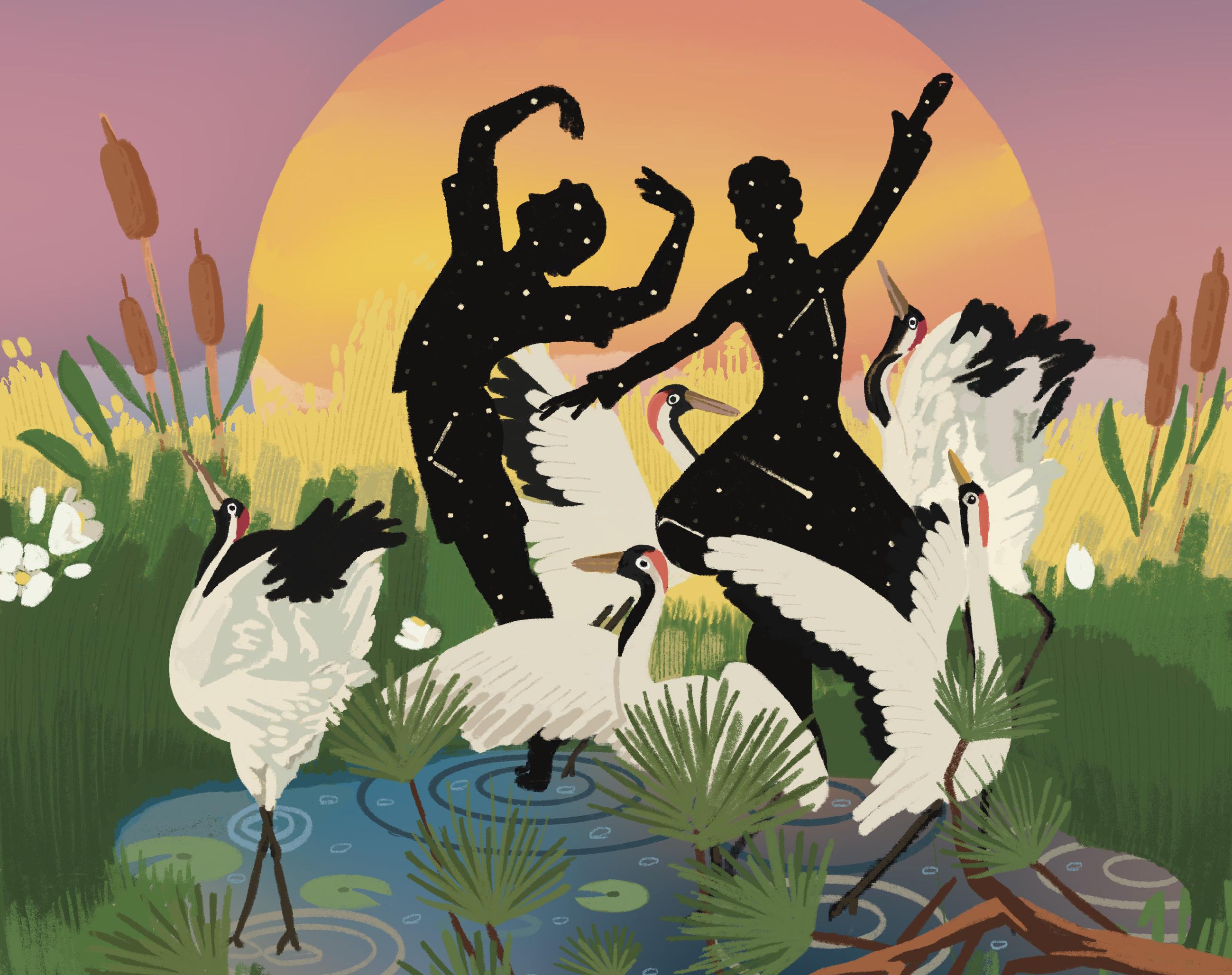
Jessica continues. “It was a difficult time for Ollie and for our family, but watching him work on this project, and being able to offer my support, was a way for us to come together.
“This experience has also given us a shared sense of purpose, and a deeper appreciation for the value of creativity and selfexpression in times of grief. Overall, I would say that this experience has brought us closer together and deepened our bond as a couple.”
Beyond grief, there are many other points in life when we might see people through a new lens, such as in parenthood, as they
discover a new vocation, through illness and caring responsibilities, on journeys of self-discovery, or simply with the passage of time.
Being such complex people is what makes getting to know others such a joy. You never know how they might surprise you, even when you thought you knew all there was to know about someone. So, be it in a new or old relationship, it might be time to hold some space for a fresh perspective on your partner. Seek it out by chasing new experiences together, discover it in late-night conversations, or just wait and see what they can show you – it might be the fuel that drives an even deeper connection.
Being such complex people is what makes getting to know others such a joy
What way of refilling your cup sounds tempting? It could be a sign to treat yourself today
Read a book
Declutter a space in your home
Get some fresh air
Say ‘no’ when you need to

Option 3
Move with yoga

Cook your favourite dish

Take a nap
Social media break
Option 2
Learn a new skill
Have a personal dance party
Enjoy a quiet moment with a hot drink

Deep breathing exercises
Option 4
Phone a friend
Get creative
Meditate
Make a list of your goals
Last week, I wanted to throw a tantrum. I had just moved house and was surrounded by boxes stacked across every surface. I couldn’t find the spoons, I couldn’t find the bin bags, I couldn’t find the phone charger, the cat was trying to break into the freezer box, and then I tripped and knocked my head on the bannister rail. In that moment, I wanted to stamp my feet, and push over a couple of those damn boxes. Instead, I followed the advice I’ve written about so often in Happiful: I sat, took some deep breaths, and did what I could to calm down. But is automatically suppressing anger and frustration always a good thing?
“We humans experience a broad range of different emotions, but none of those are more demonised than anger,” Tom Bulpit, a counsellor and
psychotherapist, says. “Rage is a natural feeling that is often triggered when we’ve been deeply hurt; that level of anger speaks to a deep level of pain within us. There’s a part of us that might want to release that rage, and let that dark, destructive force rip out of us at everything around us. We might even want to break stuff, or hurt people, or simply reflect back the injury we feel that has been done to us. But there’s often another part of us that is desperate to also keep that rage in, and to suppress it rather than let it out.”
As Tom explains, many of us have been taught from childhood that anger is a negative emotion that isn’t generally socially acceptable. And because of those lessons, we can then sense a degree of shame around feeling anger, which really muddies the water when it comes to expressing those emotions.
“Shame tries to tell us that what we’re feeling is somehow wrong, and we can deny it to ourselves, but it can be equally destructive as we instead internalise our suppressed anger, and the pressure instead just builds up within us – hidden – and damages us silently. If anger is not dealt with in a healthy way, it can manifest as depression instead, and greatly affect our relationships.
“Demonised or taboo feelings of anger are particularly problematic in certain demographics, including men, women, and certain ethnicities; with the risk of appearing as ‘the angry Black man’ who might turn violent, or as a woman who isn’t focused on being agreeable or ‘nice’ all the time. Yet our anger comes from a real place, and the pain we feel is valid. Suppression doesn’t change anything, but it harms us in the >>>

long-term, or risks enabling those whose behaviours might have wronged us,” says Tom.

Scream therapy (dedicating some time to screaming, and letting it all out) and rage rooms (rooms you can hire to break plates, take a bat to the walls, and generally just break things) are an alternative way of processing ‘negative’ emotions. And there’s a theory to back them up. Screaming, for example, triggers our survival instinct, which then floods our bodies with endorphins – it’s why swearing when you’re hurt
 Tom Bulpit is a personcentred counsellor and psychotherapist. Find out more on the Counselling Directory.
Tom Bulpit is a personcentred counsellor and psychotherapist. Find out more on the Counselling Directory.
can actually help with the pain. But how does that go down in practice?
“I was living in Tokyo in 2008, anger rooms originated in Japan around that time, and I remember hearing of a Tokyo smash room, where people could go to break plates and cups,” says Carmen Wong, a blogger who writes about Japanese pop culture at lacarmina. com. “Around that time, Japan also debuted a bizarre arcade game called ‘Super Table-Flip’. The screen shows you an annoying scenario (a naggy family, a bad day at the office), and lets you pound on, and flip over, a plastic table to score points!”
As Carmen explains, she didn’t find it surprising that rage rooms originated in Japan, where many people deal with a lot of work stress and social pressure, resulting in many other escapist outlets. But she was intrigued enough to give one a go.
“I was intrigued by the wide variety of tools available to break things, including a metal crowbar and sledgehammer! The room was also decorated in a horror movie theme, with bloody pentagrams on the walls. I suited up in protective gear that included heavy gloves and eye goggles, to protect myself from flying shards. Then, for 30 minutes, I went at it: smashing vases, TV screens, furniture, glasses, you name it. It was fun to let loose and yell, and break everything in sight.”
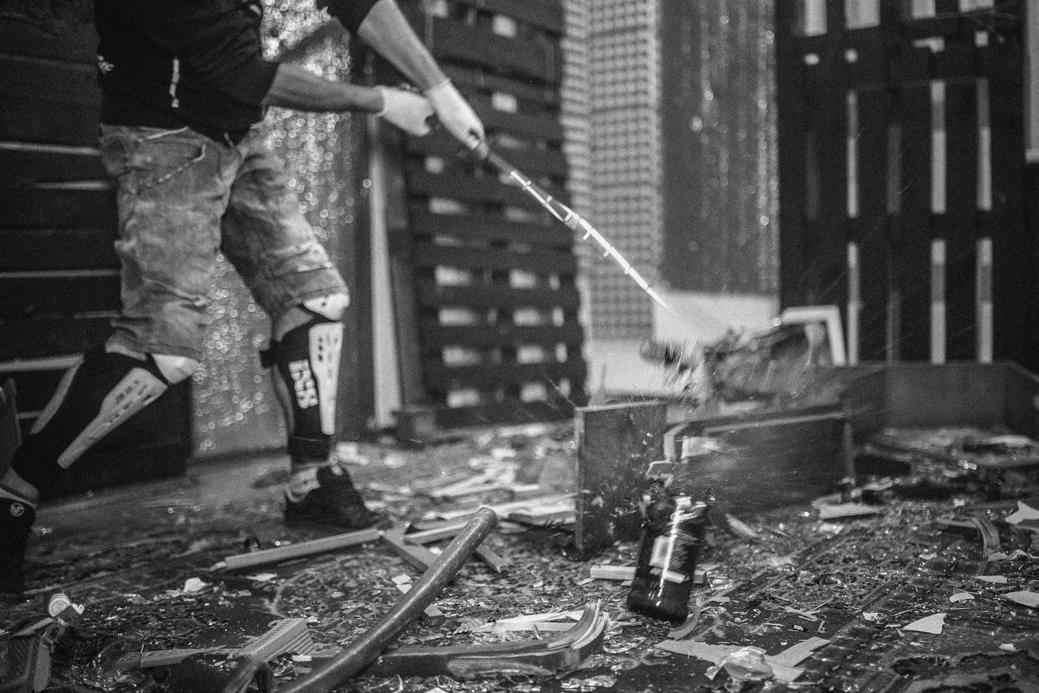
Afterwards, Carmen remembers feeling a rush of adrenaline, followed by relief – like going on a roller coaster or skydiving.
“Scream therapy and rage rooms are relatively new concepts in a very angry world. Yet, as humans, we’ve already found ways to manifest anger healthily for a long time, such as contact sports, martial arts, or music. But these might not always be accessible,” Tom says. “So the idea of just being able to anonymously book a room and smash sh*t sounds pretty appealing.
“As a therapist, my only advice would be to make space for what might come after anger. Anger often comes from a place of hurt, and we don’t like feeling vulnerable, so our rage response can be a way to mask that vulnerability. Once that mask has been spent, we might have to then sit with that raw, unprotected feeling of pain, and that might suck for a while.
“After using a rage room or similar activity, it’s totally OK if we need to have a good cry. Being mindful of the need for high quality aftercare is something worth planning in advance for
anyone thinking about booking a rage room; perhaps you could arrange for a friend to call you after, or make sure you have no other plans so you can go home and recharge. For those who feel ready for it, seeking the support of a qualified counsellor is a great way to navigate these emotions.”
On reflection, it probably was a good thing that I didn’t push over any cardboard boxes that day – a toppling tower of fragile things and a free-roaming cat isn’t exactly a controlled environment. But perhaps I should have let those emotions sit for a bit longer; they were trying to tell me I was overwhelmed and in need of help. And maybe it’s time we all reflected a bit more on our relationship with rage. Screaming into a pillow, going for a pounding run, listening to the suitably explicit ‘Break Stuff’ by Limp Bizkit on full volume, or booking ourselves in for a rage room – let it rip, it could be the start of some deeper healing.
After using a rage room or similar activity, it’s totally OK if we need to have a good cry
With the current cost of living crisis, individuals and nonprofit organisations need financial support more than ever. But not everyone is part of a team that regularly raises money for charity, or has a lot of time to give. Luckily, there is a range of simple, actionable ways to contribute to people in need – and you don’t have to feel stress, or break the bank, to do so.
Donating to your local high street charity shop is a great way to accumulate profits for a good cause. But many people don’t realise you can actually do this, and set your own prices, without leaving home.
Online resale platforms like eBay and Vinted allow charity listings, or the ability to donate a proportional account balance
to worthy causes. With Vinted, the charity is chosen by the platform, but personalised options on eBay allow sellers to select a charity from their extensive list.
If you’re still aiming to make extra cash, you can donate a certain percentage of your sale, instead of the full amount. This is one way to donate within your means, while equally reaping some benefits.
Backed by well-known chefs and restaurant chains, Hospitality Action’s ‘invisible chips’ campaign offers patrons the chance to purchase ‘invisible’ menu items. At £3, almost equivalent to a barista coffee, proceeds from ‘invisible chips’ support workers in the hospitality sector facing physical, mental, and financial issues. This serves as an alternative to adding a donation at the end of a bill,
There’s more than one way to make a difference to the world around youWriting | Emily Wilson Illustrating | Rosan Magar
allowing patrons to give more consciously.
Chains including BrewDog, Gaucho, Hawksmoor, Rosa’s Thai Cafe, The Coaching Inn Group, Catering Services International, and Hilton Hotels have joined the movement. And some outlets have their own approach – coffee brand Grind sells ‘invisible toast’!
Some people struggle to redistribute their airline frequent flyer points before expiry, when work and family commitments prevent them from travelling. Luckily, you can make a difference with accumulated points. British Airways, Air France, and Virgin Atlantic, among others, allow you to donate an allocation of miles to worthy causes. Independent organisations such as Miles4Migrants also accept frequent flyer points as currency to support refugees.
If you’re travelling locally or renting accommodation, Airbnb hosts can optionally donate profits to charity. For the adventurous, they also offer social impact experiences in your home city or around the world. This perk allows you to participate in unique experiences, with the non-profit host benefiting financially. Charitable experiences in London include walking tours and kayaking in local canals.
Food bank donations are a widely known method of offering support. Rather than donating directly, supermarkets across the UK alleviate the challenging distribution process on your behalf. Many Tesco, Co-Op, Asda, Waitrose, and Sainsbury’s branches provide drop-off points, making it simple for consumers to donate items while completing their weekly shop. Similarly, certain Boots Pharmacy branches host hygiene banks, compiling donations of new beauty and toiletry essentials.
Redistribution not only applies to food though. Zara, Uniqlo, and H&M stores collect clothing donations for redistribution or recycling, with Zara even offering home collections. For larger items, charities including The British Heart Foundation, Sue Ryder, or The Salvation Army offer furniture collections. This makes it extremely simple to declutter and donate without leaving home. Next time you clean out a cupboard, consider the many ways this can help others.
Certain browser extensions, or internet plug-ins, can accumulate charitable donations by performing simple activities, at no cost to you! Tabs for Good does this by displaying small advertisements on your browser tabs, and donating 50% of the advertising revenue. Easyfundraising allows you to shop online with more than 7,000 brands that donate charitable commissions at no cost to users. Brands included are everything from supermarkets to travel booking services, and tech giants. Give as You Live is another alternative that offers a similar commission model.
We can feel overwhelmed by huge numbers, fundraising goals, or organisational difficulties. These factors can deter us from giving what we can. But always remember that every small donation makes a difference for people across the UK and globally. Hopefully, these methods outlined will support you in making your next thoughtful contribution.
Columnist Michelle Elman reveals her own people-pleasing past, along with valuable insight into how you can shake the need to be liked, in favour of the approval of the only opinion that should matter – your own
Iused to be a people-pleaser. If I’m really honest, I used to be a pushover. I remember when I was training as a life coach, being asked what my greatest quality was, and I replied with ‘I’m reliable’. It evolved into a conversation where, fundamentally, I believed that the only reason people were friends with me was because I always picked up the phone (after one ring), would always turn up, and therefore it was nice to have someone in your life to fill the empty chair at your events. It tells you quite a lot about where my selfesteem was at the age of 20. Unfortunately, this will be the case for most people-pleasers. People-pleasers do not believe they have inherent value, and therefore they compensate (and sometimes, overcompensate) by being ‘useful’. They believe people only love them for what they can give, rather than who they are because, at their core, they do not like who they are. They wouldn’t choose themselves without the added extras, so they
assume others wouldn’t either! And even if they would, they dare not risk it, because having a relationship end, whether it be romantic or platonic, would be devastating as it would confirm the unlovability they already feel within themselves.
It is not just about how much they give to others though, it is also about how their opinions change with the wind, or depending on the company they keep, as they do not have a solid sense of self. They tend to be scared of confrontation, as their greatest fear is to be disliked, or even hated, and therefore they bend and adapt to the people in the room. They lose any sense of an identity, because when you spend your whole life caring what other people think, you forget to ask yourself for your own opinion. This is because it feels like it doesn’t matter anyway, as you will exchange it for someone else’s if that means you will garner more favour, or someone will be more interested in you.
Here’s the harsh truth: even people-pleasers are disliked. You cannot immunise yourself from rejection, and if you interact with enough humans, you will come across someone who dislikes you. Some people will even dislike you without knowing you. The fundamental piece that you are forgetting is that there are people in the world who you dislike as well. It happens! You do not have to like everyone in this world, and therefore you are not owed the fact that everyone will like you.
What you need are boundaries, which are how we teach the world to treat us, and it’s the line between who the world wants us to be and who we actually are. When you learn boundaries, you also realise that what other people think of you is none of your business. One of my favourite boundaries is the phrase ‘You are allowed to think that’. Call me selfish for setting boundaries? You are allowed to think that. Hate my boundary? You are allowed to think that. It is
not my job to change your mind, but it is my job to make sure I continue to enforce my boundary, because the fact is, you do not have to like my boundary in order to respect it. Setting boundaries has a way of figuring out who is in your life for you, and for what you provide them, and that’s because when you say no, you will inconvenience some people. You will particularly inconvenience the people in your life who have become accustomed to taking advantage of you.
Say ‘no’ more often, and see who sticks around. More importantly though, sit in the discomfort of saying no. That fear before the words come out of your mouth, or the guilt that sits in your stomach after, is you unlearning your people-pleasing tendencies. It might bring discomfort, but instead I want you to focus on the positives. Find the small grain of pride in your body that you did something different, tried something new, and stood up for yourself, and breathe into it. Let it
grow and expand, and realise that this is just the beginning!
Once you start doing this, you will realise that losing the approval of others, and being disliked by some people, isn’t as terrifying as you think, because while you are more likely to be hated with boundaries, you are much, much more likely to be loved by yourself. You won’t need the approval of others because you have the approval of you – and that’s far more important!
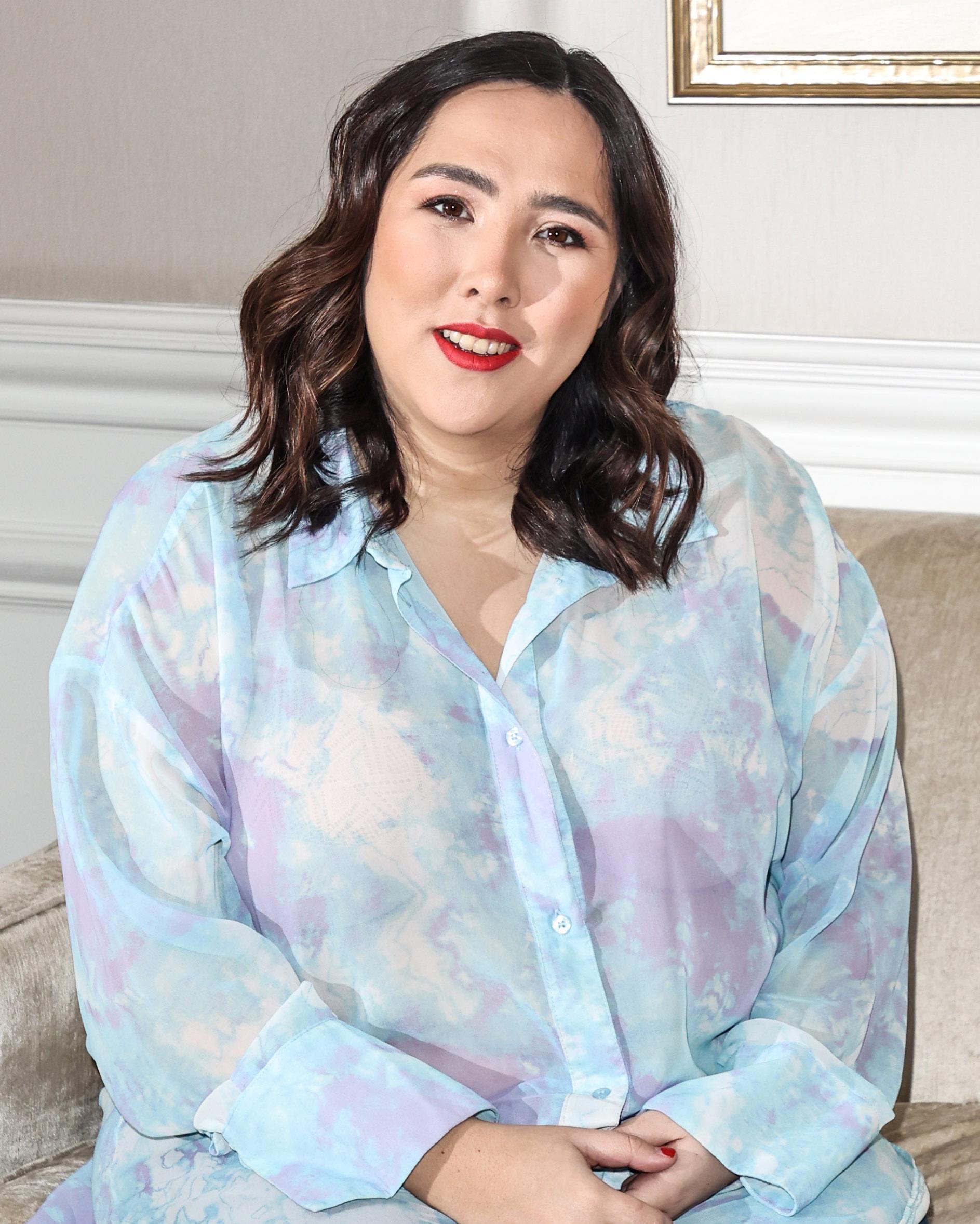

When you spend your whole life caring what other people think, you forget to ask yourself for your own opinion

“To live is the rarest thing in the world. Most people exist, that is all OSCAR WILDE
Growing up, Sam Thompson shouldered labels, including ‘lazy’ and a ‘bad student’, that might be familiar to many who also struggled in school.
“People would make these statements about me, and I remember crying in front of my
Reality TV star turned presenter and content creator, Sam Thompson spent his childhood feeling like an academic failure when focusing on schoolwork didn’t come naturally. But, being assessed for ADHD as an adult has put everything in a new light…

textbook multiple times while trying to do homework, because the information wouldn’t go in and I couldn’t focus,” says Sam. “Other pupils were focused, but I physically couldn’t concentrate, so people would call me stupid, or teachers would say I was disruptive. The word ‘application’
got used a lot too. I tried to ‘apply myself’, but I just couldn’t.”
Now, Sam’s childhood struggles make sense. Last summer, as he neared his 30th birthday, the Made In Chelsea star was assessed for attention deficit hyperactivity disorder (ADHD), a neurodiverse condition estimated to affect >>>
1.9 million UK adults, defined by inattentiveness, hyperactivity, and impulsiveness – classic behaviours that were all too familiar for Sam.
“I’ve always known there was something slightly different about me, but it’s only since I’ve started to ‘adult’ a bit more that I’ve wanted to figure it out, because a lot of symptoms were getting worse,” says Sam, who allowed documentary makers to follow his journey.
Sam invested more than nine months in filming, meeting doctors and professionals, others with adult ADHD diagnoses, as well as putting his own behaviours under the microscope with “20 or so hours” of therapy, a process he describes as “mentally exhausting”.

“I was nervous at the start because I knew it would involve tapping into a life of mine that a lot of people
don’t normally see,” says Sam, who, during a decade on telly, has become famous for his creative, high-energy persona. But, to those closest to him, he is also known for impulsiveness, procrastination, spiralling in times of stress, forgetting appointments, as well as losing his car keys, and those of his girlfriend, Zara McDermott.
In E4’s Sam Thompson: Is This ADHD?, which airs in May, Sam breaks down as he is diagnosed with ADHD, as well as autism and motor tics, specifically rapid eye blinking, which are not uncommon in people with ADHD.
“When I got the diagnosis, it was a weight lifted off my shoulders,” says Sam. “Thinking about the way I was at school and with my girlfriend, I thought, ‘I’m not actually a bad person.’”
Crediting Zara for supporting him on his journey, Sam reveals that without his diagnosis, their four-year relationship would have been in jeopardy.
“I’m so grateful to Zara for being on the documentary, putting herself out there, being present and honest. The diagnosis has 100% strengthened us.
“In the past, I’d go through life thinking, ‘Am I just an arsehole? Why can’t I always listen to my girlfriend? Why aren’t I present? Why don’t I ask questions, ask for context, and show I care?’ I knew my girlfriend wanted those things, but I wouldn’t give it to her.”
He adds: “Before, I thought, ‘I can’t listen’, but now I know there’s a reason I struggle, it’s my duty to try to figure it out, and make it as good as it can be. The diagnosis has definitely strengthened our relationship, massively.”
As Sam talks via video call from his home in west London, he raises a stress ball to the camera.
“As I’m talking to you, I’m squeezing this,” he smiles. “I’ve learned a lot of techniques to help me, like to keep focused with daily admin tasks, my counsellor gave me a little stopwatch. I now use timesheets to write down where I need to be and when, how I’m
When I got the diagnosis, it was a weight lifted off my shouldersPhotography | James Rudland ‘Sam Thompson: Is This ADHD?’ will be coming to E4 and All 4 this May. Follow Sam on Instagram @samthompsonuk
going to get there. I write a plan of attack for everything, so I can visualise it. Putting what I need to do into text massively helps.”
In the programme, Sam tries a dose of a stimulant called Elvanse, and notes feeling “calm and reserved” before deciding to abandon medication, worried it could suppress the creativity that has made his career a success.
“I’m proud of myself, proud of where I’ve got to in this industry, and proud of the work I’ve put in. I’ve got this far with ADHD, and I like to think I’m excelling in some areas, so I don’t want that to change, although I know medication works really well for so many people,” he says, noting that the biggest game-changer has been self-understanding.
“The number one thing is being able to talk to myself, identify a difference in emotion, and spot it early,” says Sam. “During those times, I say to myself: ‘You’re having a moment, mate. Take yourself away.’ I’d sometimes spiral into stress mode, but now I take a deep breath and think, ‘I know why I’m feeling this way.’ Simply having the knowledge of my ADHD really helps me.”
In recent months, a number of celebrities have gone public with being diagnosed later in life, including former Great British Bake Off host Sue Perkins, 53, comedian and actor Johnny Vegas, who was diagnosed at 52, and Loose Women star Nadia Sawalha, 58.
Talking openly about ADHD, plus greater access to information, has led to more people seeking referrals, but the shortfall of trained ADHD psychiatrists has
created a mismatch of demand, and capacity in diagnosis and treatment. Unless, like Sam, a patient books a private assessment, many can be on NHS waiting lists for up to seven years, as noted by charity ADHD Action.
“It’s a disgrace,” sighs Sam. “I paid for the private consultation myself, and I am aware I was incredibly fortunate to be able to do so, but there are so many people for whom a diagnosis would completely change their lives, but who physically can’t get an assessment.”
So, what advice would Sam offer those struggling to get immediate professional help for potential ADHD symptoms?
“For me, a huge thing was wanting to feel like I’m not alone, and that’s why social media is amazing because it connects so many people,” he says. “Some people digitally dedicate their lives to helping people who can’t afford to get professional help.”

Highlighting the work of ADHD advocate Rach Idowu, who raises awareness of, and normalises neurodivergence, on Instagram @AdultingADHD, Sam adds: “Rach posts ADHD trait cards, and everything she says, I go ‘That’s me!’”
Understandably, going public with his own diagnosis, Sam admits, triggered some concerns.
“I don’t care that I’ve got any sort of label. What I do care about is other people not giving me an opportunity or thinking of me in a different light.”
Yet Sam is the first to admit that, post-diagnosis, he is thriving professionally.
“I now feel I know myself, my mind, and my body more. Now it’s about seeing what I can accomplish,” says Sam. “I want to be so proud of myself and prove everyone wrong who thinks that ADHD is a problem. A lot of my teachers would say, ‘He’s just a bad kid’. Well, no. Look where I am.”
For Sam, the greatest reward to come from speaking openly about his diagnosis is widening the conversation around ADHD, and supporting others.
“So much discussion needs to happen around ADHD and schooling, because I think curriculums need to change to fit everybody,” Sam says. “If, from making this documentary, one person signs up for an NHS assessment to eventually get some answers, now that would be pretty cool.”
I want to be so proud of myself and prove everyone wrong who thinks that ADHD is a problem
Whether you’re crossing the finish line of a 10k you trained hard for, or finally bringing that brilliant business idea to life, there are few things in life that feel as good as seeing a project come to fruition.
But, sometimes, when working towards something we really want, we can lose sight of what actually matters. We might sideline plans with friends, cut back on hobbies we enjoy, and replace living in the moment with a totalitarian routine that leaves virtually no room for fun and enjoyment.
In psychotherapy, this is known as taking a rigid approach to your goals, and when taken too far it can have a knock-on effect on your mental health. Gin Lalli, a solutionfocused psychotherapist and author of How To Empty Your Stress Bucket, believes emulating others has a lot to do with it.
“Successful people all over social media are talking about planning,
productivity, and manifestation, and so your perception is that, if that’s what they are doing to be successful, you need to do that too,” Gin says.
The trouble is, this can often feed into all-or-nothing thinking. That might mean fixating on a goal, leaving very little time for relaxation, or sidelining those just-for-fun activities in favour of getting stuff done.
When we take this approach for too long, Gin says it can lead to an increase in stress and anxiety. “Your mind cannot run on one track at 100MPH for very long. Just like a car needs to stop and refuel, so do you.”
Gin believes that, if you’re a rigid goal-setter, you may have got the process backwards. Rather than focusing on your goals with an intensity that will lead to burnout, you need those moments of fun, spontaneity, and joy to recharge and refocus.
“Your subconscious mind will continue to work on your goal while you’re having fun – I guarantee that – and once refreshed, you’ll have far more motivation to continue,” she says. Gin uses taking a tea break at work as an example. Imagine you’ve spent hours pouring over a problem. Eventually, you give up, and go for a walk or boil the kettle. When you come back to your desk, the solution often seems to appear out of nowhere.
As Gin notes, this is because our subconscious mind is able to better problem-solve when we’re relaxed. “Solutions, ideas, and creativity flow better when we have taken the time out for ourselves,” she explains.
How does this apply to your approach to achievement? Well, it can be incredibly freeing for a start. It means that you don’t need to work on your goals 24/7, while good times take a backseat.
“People with flexible approaches to their goals are often happier and calmer, and they understand that it won’t be the end of the world if they don’t reach their goal; they will adapt and adjust accordingly, if and when the time comes,” says Gin. It may help you develop a healthier attitude to failure, too.
“When you’re a flexible goal-setter, your level of acceptance is high. You understand what you can and cannot control,” Gin explains.
So, now that you know taking time out for enjoyment is a positive thing in terms of progress, how can you strike a balance between good times and goal-setting? Gin says there are a few simple tweaks you can make.

The pressure to achieve is often rooted in comparison. We see others succeeding and feel less about ourselves if we aren’t able to do the same. In turn, this can lead us to put unnecessary pressure on ourselves to emulate their success.
“There’s no such thing as an overnight success,” Gin points out. “There has undoubtedly been a lot of background work, and maybe even a team of people to help bring that person’s goal to life.” When looking at others, it may help to bear this in mind.
Remembering the popcorn analogy could prove useful too. According to the popular adage, popcorn is prepared in the same pot, in the same heat, and in >>>
the same oil, and yet the kernels do not all pop at the same time. Humans are the same; we all progress at different rates, so sit tight – your pop is coming!
We’re more likely to be rigid with our goals when we’ve set the bar far too high to begin with.
“You need to get objective and rational about what is achievable,” Gin advises. “For example, doing a triathlon in six weeks’ time when you’ve never run a 5K is pretty unachievable, and as much as you might want to do it, deep down you know it’s not realistic.”
If achieving a goal is coming at the expense of enjoying your life, it’s time to reassess. We’re often told to reach for the stars, but sometimes it’s OK to do what’s manageable, and reach for the low-hanging fruit instead.

The next time a last-minute invitation, like brunch with your friends or a spontaneous trip, comes your way, remember
the word ‘balance’. The goal is to have rewarding and fulfilling experiences in each area of your life, rather than tipping the scales in favour of one, like your career, for example.
A good question to whip out when you aren’t sure which area of your life to prioritise? How does this opportunity fit into my overall life plan?
Just like you create routines and put strategies in place to achieve your goals, it can be helpful to pencil fun in the diary, too, making it less likely to fall by the wayside.
Perhaps Gin’s most valuable piece of advice is to get some perspective. Sometimes our goals feel like the be-all and end-all, and we assume that we won’t be happy or satisfied until we achieve them.
This isn’t the case. You can find ways to live in the moment, no matter where you’re at on your journey.
To keep that in mind, Gin advises reframing your failures and remembering just how far you’ve come. “Often, we forget how much work we have actually put into something just because we haven’t got that final little piece of the puzzle,” she points out. “Make sure you keep observing the progress you’ve made.”
Taking a flexible approach to your goals may mean that it takes a little longer to reach your destination. Balancing goal-setting with good times means making plenty of pit stops to replenish and refuel along the way. The process may be slower, but you’re more likely to cross the finish line with your wellbeing intact.
You need those moments of fun, spontaneity, and joy to recharge and refocus
The power of the mind-gut connection is wellestablished, with poor gut health being linked to fatigue, skin irritations, and mood issues, amongst other concerns. So, it’s important to keep our digestive system running well. But where do we start?
 Writing | Rebecca Thair
Writing | Rebecca Thair
The high fibre content in these items is essential to help our digestive system flow, and feed the good bacteria in our guts. You want to aim for a mix of soluble fibre (found in bananas and oats) which can help lower cholesterol, and insoluble fibre which supports regular bowel movements (try carrots, courgettes, and wholegrains like couscous and brown rice).
A study published in Oxidative Medicine and Cellular Longevity explored the impact of exercise on gut microbiota, and found that even gentle movement helped to “enrich the microflora diversity”. This is essentially supporting an increase in good bacteria, as well as the diversity of bacteria – and the more varieties of bacteria, the more health benefits that could be available.
Speaking of variety, one concern with traditional Western diets is
that they can be quite limited, often made up of processed and high sugar foods, red meats, and dairy. Several studies, including one in Frontiers in Microbiology, have compared the more varied diets of those living in rural regions to those in urban, Westernised areas, and discovered that the gut microbiome diversity was much greater in these places where there are a wealth of plant food sources. So, take some inspiration from these areas and shake up what’s on your plate! The idea of ‘eating the rainbow’ is to feature a broad colour palette with your food, to ensure you get a wide range of nutrients.
Nurturing our gut microbiome, probiotic fermented foods such as kefir, tempeh, sauerkraut, and low sugar natural yoghurt, support the growth of good bacteria, particularly lactobacilli. This has been found to help with IBS symptoms including bloating, and supports your
immune system, with the British Journal of Nutrition featuring a study that claims it could improve symptoms of the common cold. Research in the journal Annals of Allergy, Asthma & Immunology even suggests probiotics could help reduce inflammation symptoms in those with eczema.
Worries leaving you ‘sick to your stomach’? Or going through a ‘gut-wrenching time’? Stress and emotions can have a very real impact on our gut, as cortisol floods our system and we enter fight-or-flight mode. This, in turn, can prompt the production of more stomach acid, resulting in indigestion, along with increased nausea, and potentially diarrhoea. Of course, you can’t just snap your fingers and magically cut stress from your life, but finding tools and techniques to help you manage stress on an everyday basis can put you in good stead – try meditating, deep breathing, and developing good sleep habits.
The gentle crunch of twigs and leaves underfoot, the dappled sunlight piercing through the branches above, and the scent of a recent rainfall on the breeze as it sweeps by – a woodland walk truly holds a special kind of magic. And whether it conjures up memories of exploration and adventure as a child, or escaping the hustle and bustle of the wider world as an adult, time spent enjoying nature on our doorstep is a wonderful thing for so many of us.

Why reforestation is so vital for the UK, and how you can get involved
So, could you imagine a world where this beautiful space, teeming with life, no longer exists? Would you even want to?
It appears to be a sorry state of affairs in 2023 that sees woodland only covering a meagre 13% of the UK, according to the Woodland Trust, while the average in Europe is 37%. Additionally, shocking figures from the charity show that a third of all woodland wildlife species are in decline, while one in 10 is at risk of extinction.
The forests we have left are in dire need of protection, but in order to save the wildlife relying on these spaces, we have to do more. And that’s where reforestation projects come in.
With the UK government pledging up to £750 million in funding between 2020 and 2025, in order to increase woodland threefold, numerous projects across the UK have started cropping up.
One example has seen 3 million trees planted since 2018, in and around Liverpool, Manchester, Leeds, York, and Hull, among other places, in order to create the Northern Forest. The area previously fell short of the UK average woodland coverage, reaching only 7.6%, so was in desperate need of transformation. And now, the goal is to reach 50 million trees planted, not only establishing a thriving environment for wildlife, but for the local communities, too, creating jobs, cutting carbon
emissions, and reducing the risk of flooding.
But it’s not just expansive areas seeing a big change. Innovative projects, such as Earthwatch’s ‘Tiny Forests’, ensure that urban areas aren’t neglected. Since planting its first forest in March 2020, the project has gone on to identify sites where nature is most needed, engaging local communities and volunteers to create thriving, dense woodland in small spaces – for example, their techniques allow them to plant 600 trees in a tennis-court sized plot! The resulting space works to counter the effects of climate change, offers an educational resource for students in local communities, an area to relax amid nature, as well as providing a home to a rich array of wildlife.
So far, they’ve planted more than 150 Tiny Forests across the UK, with the aim of reaching 500 in the UK and Europe by 2030, ensuring as many people as possible have access to green spaces.
If you’re feeling inspired and want to play a part in regrowing our nation’s forests, there are many simple ways you can get involved:
1. Plant a tree. It really can be as simple as that – if you have a garden, or small patch of land to call your own, dedicating space to some greenery can support local animals. Every tree planted matters!
2. Donate to tree planting projects. For those without outdoor space, you can contribute to projects such as Just One Tree, knowing that a tree (or several) will be planted directly thanks to your donation. In fact, this is the initiative Happiful donates to as part of our pledge to plant two trees for every one used to print our magazine! Visit justonetree.life
3. Use environmentally-friendly browsers. At absolutely no cost to you, search engines like Ecosia plant trees, powered by your searches.
4. Volunteer at a reforestation project near you. You can search rewildingbritain.org.uk to find a wealth of information, and any local events where you can dig in and literally lend a hand.
Find out more about reforestation and the importance of protecting our woodland at woodlandtrust.org
plant 50 million more trees in the next 5 years
Could adopting a more compassionate approach in the face of unreasonableness be the answer?
Seeing as the adult population can, on average, recognise just three emotions –happiness, sadness, and anger – we could take a guess.
But if we only have these three emotions in our toolkit, it may go some way to explaining why, for some, accurately recognising or expressing emotion can be so hard. So building our language around emotions and developing our emotional intelligence is a great way to ensure we can more accurately recognise and respond appropriately in different situations.
If you’re reading this magazine, it’s likely you have already started to explore a wider range of emotions. But what about if we notice something in someone else which seems to be driving people away from them?
We have sufficient evidence to know that we are hardwired for connection, so if we think someone is avoiding human connection, or perhaps even acting in a way which is pushing others away from them by behaving in an unpleasant or
confrontational manner, how could we try to offer support?
Take a deep breath and make a generous assumption
The breath allows us a moment to regulate our own emotions, make sure we are not hooked on any emotion of our own, and be in the present moment with the person we are hoping to support. The generous assumption allows us to recognise that which we do not know: the things this person has experienced, which we know nothing about.
When we lead with curiosity, it can help keep us out of judgement – a good place to be when supporting others. Curiosity is asking something like: “I’ve noticed [insert an observation that is as precise as possible, i.e. you’re not with the group for tea breaks/you snapped at X yesterday]. It made me wonder if there’s something going on for you at the moment, and if you’d fancy a cuppa and a chat?”
You may have heard a lot about the power of empathy; it has the potential to supercharge connections. One way to foster empathy is to reflect on the emotions you pick up on from the other person. For example, saying: “That sounds tough, it makes me feel frustrated/ worried on your behalf. Is that how you’re feeling?” It’s important to check if you have read their feeling right, and give them a chance to correct it if you’re not on the money – i.e. “I am frustrated, but I’m also really upset that this is happening.” Then you can respond with:
“Yes, I can see that now, you’re frustrated and upset.”
When we lead with curiosity, it can help keep us out of judgement
Once you have spoken to them, the person may need time to reflect on your conversation. In this case, it’s important they know there is no judgement or shame, and that you are open to further conversations when they may feel like it. You might leave them with: “I appreciate you talking to me today. Shall we catch up again later in the week?” And, if it’s appropriate, follow up with a message later that day, or the next, saying it was good to talk.
Self-care is always important, even more so when you’re supporting others, and especially when those people may be a significant draw on your energy, as this can impact our own wellbeing. Ensure you have places you can offload – bearing in mind any confidentiality you may or may not need to keep. Confidentiality should be maintained where possible, however, where there is a risk to the individual you are supporting or others, this overrides confidentiality. In a work setting, this may mean speaking to a line manager or HR. In family or personal situations, it may mean you need to speak to a next of kin, other family members, a person’s GP, or emergency services. Where possible, this should be discussed with the person you are supporting, so they are able to be involved in the decision-making relating to their care.

What is the subconscious?
Cognitive hypnotherapist Adrian Jackson explores what our subconscious and unconscious minds are (and how hypnotherapy can tap into them)

Learn more on the Hypnotherapy Directory
QCan you tell us what the conscious mind is?
AThe conscious mind is the analytical, logical, and rational part of the human brain. It helps us make deliberate decisions, houses our shortterm memory, and monitors our present environment. It operates with linear logic, making sense of
QWhat is the unconscious and subconscious mind?
AThe subconscious mind lies below our conscious awareness. Its job is to regulate our emotions, and short-term memories. When successful, the subconscious mind protects us from danger. It warns us of potential harm by triggering our fight-or-
data and facts through reasoning and deduction, allowing us to respond immediately to any given situation. In fact, it is the part of the brain reading these very words!
We use this logical thinking when engaging in problemsolving tasks such as organising our day, or making sense of the world around us.
However, when it is left to run the show, it may backfire and begin to overthink and over analyse. This is usually a sign that we are not engaging with our emotions in a healthy way, which, paradoxically, causes heightened states of anxiety and stress. Thankfully, we can use the deeper levels of our minds to bring things back into equilibrium.
flight response to help us react quickly to any perceived threats. The unconscious mind is the deepest and least accessible part of our mind. It is the repository of our most primitive instincts and emotional drives. It accommodates memories and experiences that have been repressed or forgotten, but which still influence our daily
behaviour and emotional states. These may include traumatic experiences, fears, and anxieties – the things we would rather not think about consciously.
Sometimes it is necessary to explore these deeper levels of the mind in order to resolve hidden conflicts that may be preventing us from living how we would like.
you need
QHow does hypnotherapy impact our unconscious/ subconscious?
ADuring hypnotherapy, the therapist guides the client into a trance-like state, which, simply put, is a state of deep relaxation and heightened suggestibility.
In this state, the client is more receptive to suggestions, and can access the unconscious or subconscious mind more easily. This can be helpful in identifying
and releasing negative emotions and patterns of thinking that may be deeply ingrained, and difficult to access through traditional talking therapy. By accessing and addressing these underlying issues, hypnotherapy can facilitate healing and promote positive change by replacing negative patterns with positive ones.

Overall, hypnotherapy is a powerful tool for accessing and impacting the unconscious or subconscious mind, allowing for deeper healing and personal transformation.
QWhat kind of problems/ concerns can benefit from working with the unconscious/subconscious?
AThere really is no limit to the psychological issues that can be addressed by working with the subconscious/ unconscious mind. Accessing these parts of ourselves can help to reveal underlying psychological factors contributing to these issues, or uncover unmet needs that need to be addressed.
Hypnotherapy, in particular, can be used to address issues including anxiety, depression, stress, trauma, PTSD, phobias, addictions, and self-esteem.
Working through mental blocks or repressed negative emotions can give us clarity on how best to proceed towards healthy change, which will lead to better-coping strategies and beneficial perspectives when faced with life’s challenges.
When used in collaboration, the conscious, subconscious, and unconscious minds can be thought of as an orchestra of psychic and emotional wellbeing. By resolving inner conflict at all levels we can conduct our lives like a symphony, and learn to live with a more harmonious flow.
If you’re anything like me, you’ll have collected an array of repetitive behaviours and habits over the years. This will have inevitably led to investing a large amount of time trawling endless articles, comment sections, and blogs peppered with phrases such as ‘kick your annoying bad habits’, ‘make a positive change’, or ‘replace unhealthy behaviours’ in an attempt to put a stop to them, once and for all.
But, also like me, you may not have paused to question why we feel the need to stop repetitive behaviours, and what our bodies are trying to tell us when we do them. I have recently discovered that a lot of what I have always classified as engrained ‘bad habits’ are actually lesser-known stims, and are valuable tools used to regulate our bodies when we’re feeling over or understimulated.
Let me be clear, some of these habits are damaging, and identifying alternatives is something I continue to work on, but some (such as my enthusiastic and relentless
repetition of the only line of a song I know) are quite harmless, if a little confusing for anyone in the vicinity.

Identifying and recognising these lesser-known stims recategorises their persistence from a horrible lack of willpower on my part, to a sign that my body is subconsciously and purposefully adapting to my environment, which has been invaluable for my self-esteem.
What is stimming, and why do we do it?
Stimming, or self-stimulating behaviours are soothing repetitive actions that can regulate our emotions, how we channel our energy, and aid concentration. This can include physical movement and vocalisation, and common examples include finger or foot tapping, flapping hands or arms, chewing, rocking, or humming.
Everybody subconsciously exhibits some form of stimming behaviour, whether it’s drumming your fingers when you’re feeling impatient, or biting your nails
when you’re feeling nervous. For some people, however, stimming is an important method of emotional regulation, and coping with sensory overload (including understimulation) on a daily basis. This presents more often in people with autism spectrum disorder (ASD) and attention deficit hyperactivity disorder (ADHD).
What are some examples of lesser-identified stims?
So, what exactly do I mean by lesser-known stims? Here are some examples that I encounter every day:
• Echolalia – the repetition of words, sounds, or phrases.
• Cracking knuckles and/or other joints.
• Biting or picking the skin around your nails and lips.
• Repetitive hair pulling, twisting, or braiding, running fingers through hair, and scalp picking.
• Rocking movements, hand and arm movements, and leg bouncing. For me, this is demonstrated by clapping my hands when I’m excited or
It’s time to change perceptions; understanding your stimming behaviour and lesser-known stims could be key to improving your self-esteemWriting | Emma Johnson
and aid concentration
happy, as well as rocking back and forth when I’m enjoying a meal or snack.
• Pen clicking.
• Chewing gum.
• Rubbing feet together.
How can identifying and acknowledging our stims help with self-esteem?
Reframing how I view my behaviours, and recategorising habits that I have always considered to be vices as coping mechanisms, has given me a new appreciation of how adaptable and amazing my body can be. With a new understanding comes a welcome boost in self-esteem and a fresh perspective. You are not lazy, or hopeless, or lacking in willpower, you are creative, self-regulating, and adapting to your environment. Read that again, it’s important. >>>

Stimming behaviours are soothing repetitive actions that can regulate our emotions, how we channel our energy,
Identifying stims builds up a more comprehensive and complete picture for ASD and ADHD diagnoses, so if you are currently piecing together information for your formal diagnosis, everyday things like this can be extremely valuable. Furthermore, discounting diagnostic criteria such as stimming as just a habit could even delay any potential diagnosis by limiting your perceptions of your behaviours and symptoms.
With each new stim identified, you are highlighting that you’re regulating your energy and emotions, and have the opportunity to notice if there are any common factors triggering these. If there are adjustments you can try to make yourself feel more comfortable, this can contribute to your overall wellbeing and energy levels.
For example, if you notice that you seem to pick or bite the skin around your nails when you have
to sit still for a long meeting, you can make sure you have a fidget or sensory aid to replace this in future.
Next time you see someone unconsciously stimming, take a second to consider the message you’re sending before bringing it up. While usually said in jest, being told your stims are ‘annoying’ or a bad habit you need to break can be embarrassing, damaging for your self-esteem, and can cause considerable anxiety in social situations.

Be patient with yourself and others. While not initially obvious, stimming is much more than a habit. Making yourself feel bad, disruptive, or simply incapable of stopping a particular stim, isn’t helpful or effective. Consider comparing this to blaming yourself for not being able to stop sneezing when you have a cold. In most other circumstances,
we question why our body does something, and habits shouldn’t be any different.
If you are struggling with habits or stims that are causing harm, there are plenty of different sensory aids available to try, and picking up a variety to see what works for you can be an inexpensive and positive step forward in transferring this behaviour. Most sensory aids are small enough to fit in your pocket to keep at hand throughout the day, and I find leaving some at work, in my bag, and various places around my home to ensure they’re within easy reach means you will use them more.
Learning more, and, in turn, accepting more about yourself is a thought-provoking and valuable journey to be on, and facilitates a more positive outlook towards yourself and others.
You are not lazy, or hopeless, or lacking in willpower, you are creative, self-regulating, and adapting to your environment
Most nutritional therapists and health practitioners have a story about what led them to pursue that particular career, usually involving their own health challenges. For me, it was a journey with autoimmunity.
I was 19 years old, doing a degree in Communications in London, and had begun noticing whiteheads on my legs and back. At 19, this was aesthetically annoying, but I didn’t think much of it. Google wasn’t a thing in the late 90s, so there was no searching for symptoms and treatments online, so I made small but significant adjustments to address things myself.
Eventually, I went to see my GP, who asked me strange questions about my brand of washing powder, and riding horses. Although some of the acne was on my inner thighs, even at 19, I knew that this was more than
an allergic reaction to soap, or irritation from equestrian sports.
It all came to a head when I, exasperated, and not knowing where to go, went to A&E. My hands were looking arthritic with swelling and shiny, stretched skin on my knuckles. My feet were so swollen that only one pair of shoes fit. The swelling in my ankles was painful and affected my walking. My body was inflamed.
While inflammation is the body’s natural response to injury or infection, in an autoimmune response the immune system turns on itself, and attacks its own cells and tissues as if they were foreign invaders like bacteria or viruses. To promote healing and repair, chemicals are transported to the affected areas via the blood, however, the increased blood flow to the affected area can cause the affected tissues to become red, swollen, and painful.
It was in A&E that the seriousness of things started to
kick in. The consultant showed genuine concern, and it was the first time that I felt heard. A&E made a referral for me to have a biopsy of one of the acne spots a few weeks later, and we received confirmation that my body was attacking itself. There had been an overgrowth of the bacteria that is naturally present in the nostrils, and my immune system had gone into attack mode. Lupus, which affects the immune system, causing issues in the skin and joints, was a potential diagnosis, but later ruled out.
I was also losing weight, and while, admittedly, my 19-yearold self was pleased with this, I also knew that it wasn’t a healthy weight for my body type. Then there was the fatigue. It’s hard to say if the fatigue caused my mood to dip, or if my mood dipped because I was so tired. But I struggled to get out of bed, and generally felt a sense of apathy >>>
Nutritional therapist Claudine Thornhill reveals her personal story of finding out she has an autoimmune condition, and how the experience shaped her future…
Writing | Claudine Thornhill
and demotivation. Under the covers felt like a sanctuary. Thankfully we had the resources for private medical treatment, and avoided the lengthy NHS queues. At this stage, my grandmother and I, who had joined us for a hospital consultation, were walking at the same pace. Her, due to her 70 plus years of age, and me because of the pain and swelling in my feet and ankles.
Rheumatoid arthritis, another autoimmune condition where the immune system attacks healthy cells, also causing inflammation, was now mentioned as a player in my cascade of symptoms. Over the next year, I took a course of antibiotics and steroid medication which brought my symptoms under control. After a few months, the medication allowed me to resume normal life as the pain and inflammation reduced. Although there were side-effects, such as skin thinning from the steroid cream, and developing an allergy to penicillin, and I wasn’t yet aware of the benefits of probiotics, I was able to return to
university and repeat the year as I had missed so much.
This was the start of a journey that made me so much more sceptical about what I consumed. It started with what I put on my skin (by the end of treatment I was only using olive oil to moisturise) to what I put in my hair (ditching chemical relaxers and opting for SLS and paraben-free products). I progressed to being more aware of what I ate and put in my body. This journey prompted me to study nutrition.
My diet has evolved over the years, as my knowledge and understanding have expanded. For people with autoimmune health issues, it’s advisable to avoid foods that are more likely to trigger an immune response. These include lectin and glycoalkaloids containing nightshade vegetables, such as aubergines, white potatoes, and
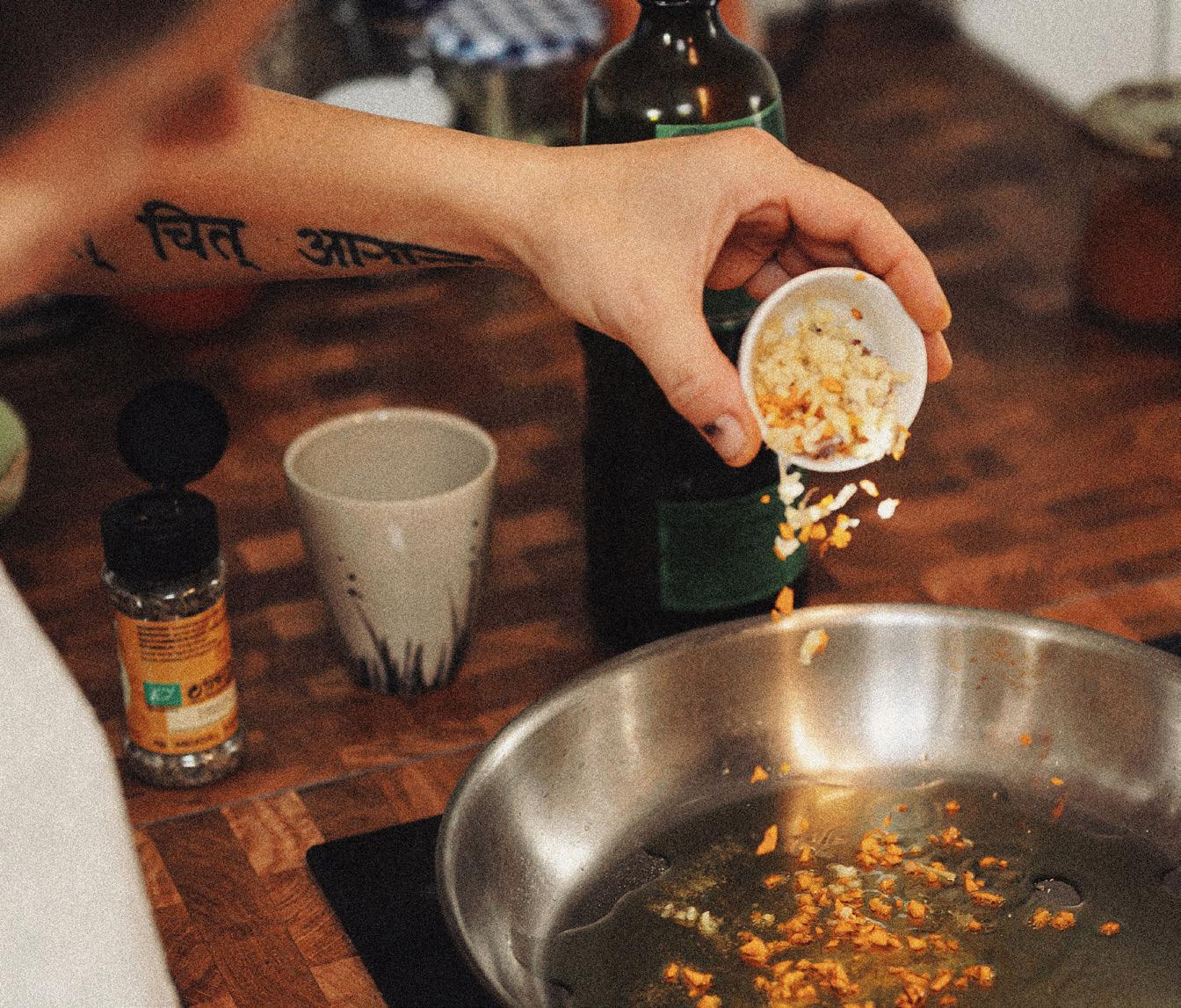
tomatoes. These compounds act as naturally occurring pesticides, but can trigger autoimmune or inflammatory reactions in some, particularly people with autoimmune conditions. Similarly, known inflammatory foods, such as gluten, dairy, seed oils, refined sugar, refined grains, and processed meat, are also recommended to avoid. People with autoimmune conditions would benefit from increasing anti-inflammatory foods, such as oily fish, chia seeds, flax seeds, turmeric, green leafy vegetables, olive oil, avocados, berries, green tea, and broccoli.
Today, I recognise how much stress and trauma play a role in adverse health outcomes. Studies have shown a link between autoimmune health conditions and physical and psychological stress, with chronic stress causing
In an autoimmune response the immune system turns on itself, and attacks its own cells and tissues as if they were foreign invaders like bacteria or viruses
the body to be on high alert and in defence mode. This is where lifestyle can play a vital role in managing autoimmune conditions. This includes getting quality sleep, regular movement, sunlight, deep breathing, Epsom salt baths, and so much more. Admittedly, I often struggle to avoid all inflammatory foods.
My weakness is anything potatobased, but I tend to focus on what I can do well, and therefore homein on anti-inflammatory foods. Berries, flaxseeds, turmeric, green veg, and green tea are some of my daily go-tos, as is a vitamin D supplement. Emotional regulation and managing stress is another personal priority, and

I continually prioritise sleep and maintaining physical activity, which caused me to fall in love with yoga. I also practise deep breathing and journaling, and limit my exposure to stress. My autoimmune health has been an ongoing journey, and although I haven’t had a flare-up since that time, it’s something that I expect to manage for the rest of my life. The outcome of this experience is that I became aware of the value of our health, and how debilitating ill-health can be at a young age. It also taught me that incorporating health into our daily lifestyle is the primary way to optimise our wellbeing, and every little action we can take to support ourselves is worthwhile.

Studies have shown a link between autoimmune health conditions and physical and psychological stressClaudine Thornhill is a naturopathic nutritionist and health coach. Get in touch with her for further support via the Nutritionist Resource.

“Never confuse a single defeat with a f inal defeat
F SCOTT FITZGERALD
Struggling to fall asleep can be incredibly frustrating. The rest of the house is enjoying the land of nod, and yet, no matter how tired you feel, you can’t get your brain to switch off, leaving you tossing and turning for what feels like hours.
For many of us, this will only happen occasionally – often during periods of high stress. But what about the times when life is going fine? What about when it’s not a constant problem – just a troublesome night or two every month? Have you ever considered that these periods of sleeplessness could be due to the full moon?
Now, some of you may be rolling your eyes, but experiencing issues with sleep during the full moon is surprisingly common. ‘Lunar insomnia’ is actually the term coined by those who experience sleep disturbances during particular phases of the moon and lunar cycle.
And, while it could be a coincidence that these restless nights occur during a full moon,
the impact the moon can have on the world (most notably the tides and the behaviour of animals) is not unknown. So is it so hard to believe that this can have an impact on people, too?
Does lunar insomnia exist?
It may sound like folklore, but there could be something to it. While research is limited, there are studies that suggest the moon has a direct impact on our sleep.
One study in particular, published in Current Biology in 2013, saw a group of researchers looking into the variations of sleep during lunar phases. Using electroencephalographic (EEG) activity during non-rapid-eyemovement (NREM) sleep – an indicator of deep sleep – and monitoring the secretion of hormones melatonin and cortisol, they found that in the days leading up to and after a full moon, it took participants an extra five minutes to fall asleep. Findings also showed that participants’
levels of deep sleep fell by 30% during this time, while their total sleep duration was reduced by 20 minutes.
Of course, there is the argument that a full moon is generally much brighter than normal, which can have a direct impact on our ability to sleep. This study, however, was conducted in a controlled environment. Sleep structures were recorded retrospectively, and participants’ knowledge of the lunar phase was restricted.
Another more recent study, published in Science Advances in 2021, and perhaps the most extensive on the subject, revealed that the duration of a person’s sleep is reduced in the week preceding a full moon, regardless of location and exposure to artificial light. In this case, researchers analysed the sleep patterns of two groups: those living in rural settings with and without access to electricity, and those living in highly urbanised postindustrial settings. >>>
For when you want to be prepared, here is a list of the remaining full moons gracing our skies in 2023.
• Sunday 4 June – this is a Super Strawberry Moon, which appears bigger and brighter due to the proximity to Earth in its orbit.
• Monday 3 July
• Tuesday 1 August
• Thursday 31 August – this will be a Blue Moon. Yes, the one from the saying! This is when there are two full moons in one month (only occurring once every two to three years!)

• Friday 29 September
• Saturday 28 October
• Monday 27 November
• Wednesday 27 December
There are those who believe lunar insomnia is simply a placebo effect. All of us will struggle to sleep at times, and, while it’s a common experience, it’s also normal for us to want an explanation for things not going the way we planned. The occasional bad night’s sleep is to be expected, but, as humans, we like to have an answer so that we can resolve the problem. This can mean that the moon – and other external factors – can be put to blame.
So, while only a handful of studies have been conducted, findings indicate that the various phases of the lunar cycle do indeed have some impact on us – whether it be physically or emotionally – due to the brighter night skies, or some unknown magic. Perhaps we even bring it on ourselves, noticing a full moon and assuming we will have a bad night’s rest.
We may never know the true, full power of the moon, and how much you want to believe is up to you. But if you find yourself struggling with sleep, perhaps the answer is shining just outside your window.

If you do believe the moon plays a big part in your lunar insomnia (or even if you don’t), there are a few things you can do to ensure a more restful night...
• Be careful not to eat too much close to bedtime. If you’re still feeling full from dinner when you settle into bed, you’ll not only be uncomfortable and therefore less likely to fall asleep, but, depending on what you ate, you’re at risk of a spike in blood sugar and energy levels. Not the best pairing for when you’re trying to get some shut-eye!
• Be wary of caffeine and nicotine. You’ll likely already know to avoid caffeine too close to bedtime (many suggest having your last cup of coffee no later than 3pm), but nicotine is also a stimulant, so has a similar effect on our bodies and can keep us up at night.
• Keep your bedroom cool. The optimum temperature for the room you sleep in is thought to be between 16°C and 18°C. Lower your central heating overnight during the winter months, and perhaps open a window in the warmer seasons.
• Create a comfortable environment. Think temperature controlled duvet (or lower and higher tog for the varying seasons), low lighting, and lavender sleep sprays. If you can, invest in a comfortable mattress. When you can’t get comfortable in bed, you won’t get a good night’s sleep.
• Make use of blackout blinds, curtains, or even a sleep mask. The excess light from the full moon could well be contributing to your sleep disturbance. If you suspect this is keeping you awake, taking the steps to reduce this can help you to fall asleep quicker, and sleep through the night.
• Step away from technology. It’s suggested that we put away our phones and other electronics at least one hour before bed. The blue light in these devices is said to interfere with the body’s natural circadian rhythm, preventing us from falling asleep. If you need something to help you settle, why not pick up a book?
• Set intentions. The full moon is the peak of the lunar cycle, which is why many of us feel emotionally heightened during this time. Take the full moon as an opportunity to get clear on what you want for the month ahead, and let go of what’s holding you back.
The full moon is the peak of the lunar cycle, which is why many of us feel emotionally heightened during this time
From a calming outdoor activity to an educational podcast about psychotherapy, try something new with our enriching suggestions
Fold It Calm: Simple Origami to Quieten Your Mind by Li Kim Goh
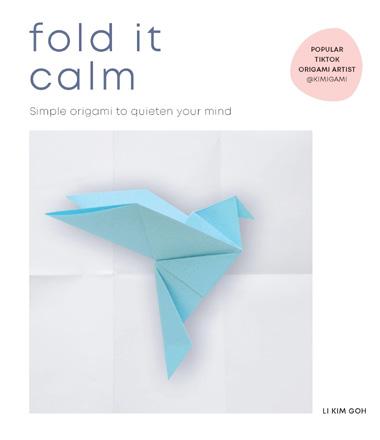
There are some wonderful activities out there to help calm your mind beyond journaling and colouring, and origami is one of them. With 50 sheets of origami paper and 25 simple projects to create – including a mini cactus and sailing boat – discover the art of paper folding for relaxation. (Out now, Ebury Publishing, £14.99)
Become a wildlife tagger
In an effort to encourage the conservation of wildlife, Instant Wild are seeking enthusiastic volunteers to tag and identify animals in live images. If you’re someone who wants to use your technology for good, and enjoys seeking out wildlife, become a wildlife tagger today and help scientists with their mission to monitor and protect species around the world. (Visit instantwild.zsl.org for more)
‘Finding Psychotherapy’
Interested in learning about psychotherapy? Counselling Directory member and UKCP accredited integrative psychotherapist Carla Vercruysse is here to inform, educate, and inspire you. Carla talks to a range of experienced psychotherapists, including Bill Young and Desa Markovic, to get the low-down on what they do and how they do it. (Available on all podcast platforms)
3 4 5
Providing the weather is good, ditch your shoes and let your feet roam free with barefoot walking. Feel the tickly grass or the soft sand between your toes, and really get to grips with the sensory benefits of feeling the earth beneath your feet.
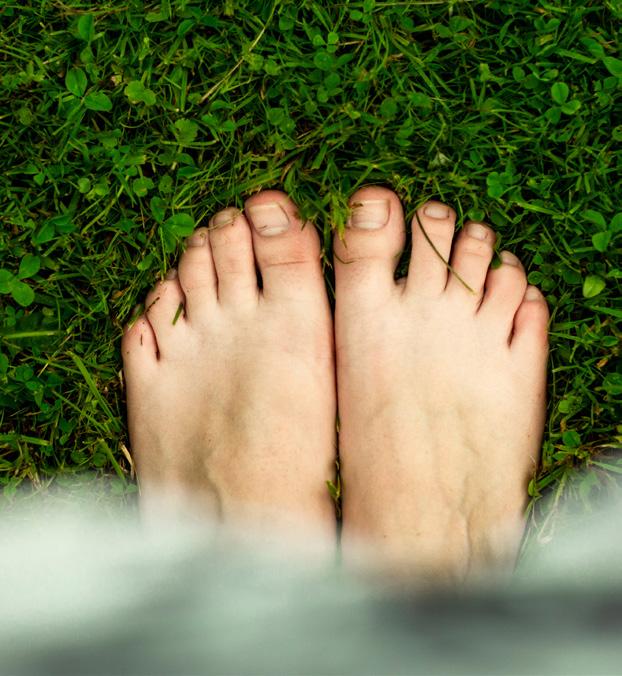
PLUGGED-IN
Humans of New York Photographer and storyteller Brandon
Stanton photographs and interviews residents living in New York to capture the beauty found in ordinary lives. With millions of people living in New York, his mission is to make sure their stories are heard, and to shine a light on what makes us human. (Follow @humansofny)
Whether it’s to cushion job security or to thrive in a current role, more and more people are turning towards upskilling to help sharpen their current skill sets. But where is the best place to start?
Platforms like LinkedIn Learning courses, Udemy, and Skillshare have a range of online courses that can help you stay ahead of the game.
9
Recipe finder
Do you have leftover ingredients that need to be used up, but are unsure of how to incorporate them into a delicious meal? Not to worry, Tesco is on hand with its handy recipe finder. Simply enter three ingredients that you have left over, and let the magic happen as the site cooks up some yummy recipes that will save you money and time. (Visit tesco.com)

8
Barre fitness
Barre fitness is not a new phenomenon, but it has maintained its popularity over the years, and it’s easy to see why. Combining elements of yoga, pilates, and balletinspired movements, this all-round workout maximises the benefits from all three to strengthen and tone muscles, and improve posture and flexibility. (Visit youtube.com for tutorials)
The loss of a loved one can be extremely difficult to process, and Spencer Matthews knows this feeling all too well, as his brother disappeared 23 years ago while climbing Mount Everest. Now, on a journey to seek closure, Spencer follows the same route on a personal mission to bring his brother’s body back. (Watch on Disney+)
Repair and Care Sleepeze Calming Gift Set
Struggling to drift off? A good night’s sleep starts with a Repair and Care Sleepeze calming gift set. Featuring an aromatic blend of calming scents (lavender, chamomile, and clary sage), this wonderful gift set includes a pillow spray, an essential oil rollerball, and an eye mask – all the essentials to calm a busy mind before bed.

(£14.95 at thesomersettoiletryco.co.uk)
For your chance to win, simply email your answer to the following question to competitions@happiful.com
How many stages of sleep are there?
7 6 10 culture
a) 3
b) 4
c) 8
I admire how compassionate and open-minded you are.
The drive you have is so inspiring!
Your passion is contagious – I love your energy.
The room lights up when you enter.
I feel safe when I’m with you.
I always learn something new from you.
I love spending time with you, as you always make me feel like I can be myself. You have the best laugh.
You’re so skilled at setting boundaries – I truly respect that.
You have such a BIG heart.
Strictly Come Dancing’s Dianne Buswell has a joyful energy and attitude that extends far beyond the dance floor. In her pursuit of personal growth, she shares how gratitude, time in nature, and embracing therapy, are just a few of the tools she uses to keep herself dancing to her own unique and beautiful rhythm
 Writing | Lucy Donoughue
Writing | Lucy Donoughue

With her flame red hair, soft Australian accent, and megawatt smile, there’s no mistaking Dianne Buswell. Since joining Strictly Come Dancing in 2017, she’s become an instantly recognisable figure, famed for bringing flawless performances to our screens, and teaching the likes of the Rev Richard Coles, Tyler West, and Joe Sugg (now her partner) to samba, cha-cha, and waltz with the best of them.
Dianne’s enthusiasm for dancing is undeniable. She positively fizzes with energy when she

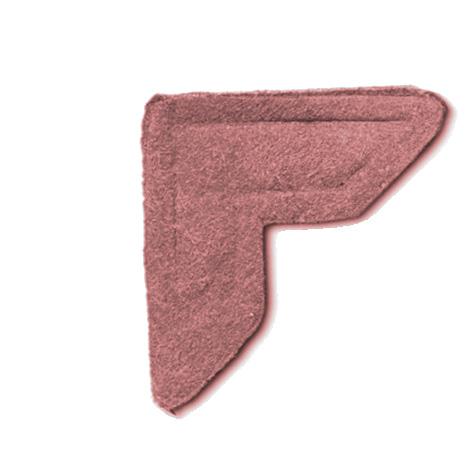
reflects upon her teaching role as a professional in the prime time show.
“One of the main things I love about Strictly is that you get a different partner every year, and you have to figure out how they work and learn,” she says, smiling broadly. “At the beginning, they all tell me they can’t dance, and I tell them that I believe they can dance, that I’m determined to make them a good dancer, and ensure they enjoy the process –and they do. I think that when you try something, and put enough
effort in, you see results. It’s a joyful thing to see yourself grow.”
Dianne champions working towards what you want to achieve in life, and reveals that alongside her dancing career, she’s also a trained hairdresser, launched her wellness company Buswellness, and has, most recently, written a book and wellbeing plan, Move Yourself Happy: 21 Days to Make Joyful Movement a Habit, filled to the brim with personal experiences, realistic activities, and suggestions for gaining more energy. >>>
However, Dianne’s dynamism and focus upon finding joy in the everyday shouldn’t be confused for blanket or forced positivity. She speaks, and writes, with caveats. She knows all too well that we’re all unique; we need to respect our minds and bodies, and appreciate who we are rather than who we think society wants us to be.
Here, Dianne shares her own methods for managing life’s highs and lows, and the small things that make a big difference to her mental health.


“I’m a little worrier and sometimes I can overthink

situations. I live really far away from my family, so the first thing I do every morning is check to see if they’ve contacted me overnight, because of the time difference between the UK and Australia.
My mum is a worrier too, and I think I’ve got that trait from her!
“When I start worrying, I realise I need to go back to all of the things that help me, like journaling and writing gratitude

notes. By expressing gratitude, I can turn something I’m concerned about into something I’m grateful for – like my family. I firmly believe you can feel a lot of worry in your gut, which impacts your brain, but when you write down what you feel grateful for, it makes your tummy feel better, which makes your brain feel better! This is why I believe so strongly in writing gratitude notes.”
“Joe and I are lucky to live where we do, because there’s so much beautiful nature on our doorstep. We have a birdfeeder in the garden, and one of my favourite things in the morning is to just watch and listen to the birds. In those moments, I’m not thinking of anything else.
“Being present in nature definitely helps me to release worry, too. I try to really take in what is going on around me, because I think we’re all guilty of
heading out and allowing what’s happened in the day to continue ticking around in our brains. It’s good to leave your phone at home, your worries on the doorstep, and enjoy your walk for what it is.”

“There’s so much positive content on social media now, and opportunities for connection. As much as I enjoy it, I know it’s easy to compare yourself to others, so you have to be quite structured with what you focus on. You should try to follow accounts that make you feel good, because it’s all too easy to head down a rabbit hole. I’ve done it myself!
“Our brains are also wired to lean towards negative thoughts, and younger people are particularly vulnerable to this, so it’s important for them to be mindful and aware of the impact of social media usage.”
“I now know that, as a young girl, it would have been really good for me to have had therapy. Growing up as a dancer, you tend to have a lot of things going through your brain that you keep to yourself. It would have been helpful to have spoken to someone about those thoughts then.

“However, it was Joe who got me into therapy as an adult. He’s very open about seeing a therapist himself and he said to me, ‘Honestly Di, you do all these things for your body, moving daily and all that, but your mind is just as important, and you should be working on that too.’ And I realised that he was right.
“When I first met with the therapist, I didn’t feel like there was anything I needed to speak about at the time. Then I found myself just talking and talking, and that seemed to unlock certain thoughts within me. Afterwards, it felt so good and I felt so free.
“I think therapy is great. It changed my mind. If you can try it, I would definitely say that it’s worth a go. I really enjoy it and find that it helps me, a lot.”
It’s a joyful thing to see yourself grow
You were likely raised to be polite to everyone. It’s just good manners, right? But what happens when courteous conversation crosses the line? Whether it’s an ill-advised query about sexuality, or a deeper interrogation about political leanings, there are certain people who – perhaps unknowingly –invade your emotional space. Instead of automatically answering and regretting it later, here are a few pointers on how to navigate those dreaded intrusive questions when they arise.
Pause before you act. Start by trying to get a sense of the other person’s motives. Not only will this buy you a few minutes of thinking time, but it also transfers the weight of responsibility back on to the questioner to explain why they felt the need to ask. If you’re lucky, they may backtrack, and realise they’ve acted out of turn. Plus, you’ll gently show them what it feels like to be questioned, which can open up the conversation to an equal blend of sharing and listening.
Try: That’s an interesting question. Why do you ask?
Consider whether you are emotionally ready to answer. It’s normal to feel a sense of panic when a stranger, colleague, or even family member asks you to communicate something you deem private. You might have a physical reaction (sweaty palms, increased heart rate), as well as an emotional response (crying, a sense of dread), and that is nothing to be ashamed of.
Therapeutic counsellor Nora Portnell suggests using these signals as a way to determine your ability and willingness to engage in the conversation. “Ask yourself, ‘What am I feeling and where in the body am I feeling it?’ Your emotions are signals telling you to act, move, or be still. Allow the emotions to guide you. They are your gut instinct.”
Know that you have the right to say no. Just because someone asks you a question, does not mean you are obliged to respond. Don’t feel
pressured into sharing, although it is worth acknowledging that in some cultures there may be no other option. If you are choosing not to answer, that doesn’t mean you need to respond abruptly. Try these techniques:

• Be honest and divert the topic back to the other person. I feel a bit uncomfortable talking about that, so I’d rather not get into it. How are things with you?
• Deflect with humour, if appropriate.
The story behind that is so long and boring, honestly, you’d regret asking me! Can we talk about something fun instead?
If someone crosses a boundary, is getting too personal, or makes you feel uncomfortable with their line of questioning, here’s a helpful guide to navigating your response
Follow up by saying thank you to show that you appreciate them respecting your boundaries.
If you are open to sharing your response, or for cultural reasons feel you must answer, Nora says that reflecting on their projections is a good place to start. Let’s use anger as an example. “Ask yourself to consider why they feel angry,” says Nora. “Is there a possible conversation you could have that would get them to appreciate that your journey and theirs are separate?”
You could point to a difference in age, gender, background, interests, or personality traits that mean they may never fully understand your choices. To de-escalate, are there any words or phrases that have calmed you in the past that might help them now? Ask for their perspective on the situation, and respect that everyone has a right to their opinion before you share yours.
Try: That’s an interesting question. What are your thoughts on the matter?

Or: I’m not sure what I think about that. How do you feel about the situation?
When approached by a stranger, you have a few options. Firstly, you could attempt to ignore the question, perhaps choosing to walk away or put headphones in. Secondly, if with a friend, look to them for support in shutting down the conversation.
Try: Would you mind telling that person that I’m having a bad day, and don’t want to talk to anyone?
Thirdly, if you feel safe to do so, answer with compassion, and steer the conversation to a lighthearted resolution.
Try: I get that question a lot, but it’s kind of personal. How’s your day been so far?

Upholding boundaries is an ongoing process, and one that can still catch you off-guard even after years of practice. Be kind to yourself as you figure it out, and don’t forget to reflect on the times when you share openly and get a positive response. Pat yourself on the back for doing the work!
Fiona Fletcher Reid is a freelance writer and author, whose book, ‘Work It Out’, is out now. Visit fionalikestoblog.com for more.
Feel like you’ve got the weight of the world on your shoulders? Take a moment to give those muscles a rest with these massages designed to reduce stress
Writing | Kat Nicholls
What is it?
Also known as ‘classic massage’, Swedish massage is the foundation of many massage types. Different techniques are used to ease muscular tension, so you leave the room feeling like a cloud that’s had all its rain squeezed out.
Why is it good for stress?
Swedish massage can reduce pain, encourage sleep, and offer you a moment of peace to truly switch off. Endorphins are also released during massage, gifting us a good mood, no matter what kind of day we’ve had.
2.
What is it?
Aromatherapy massage uses gorgeous-smelling essential oils to enhance the experience. While oils can be used in different types of massage, they’re most commonly used with Swedish massage techniques.
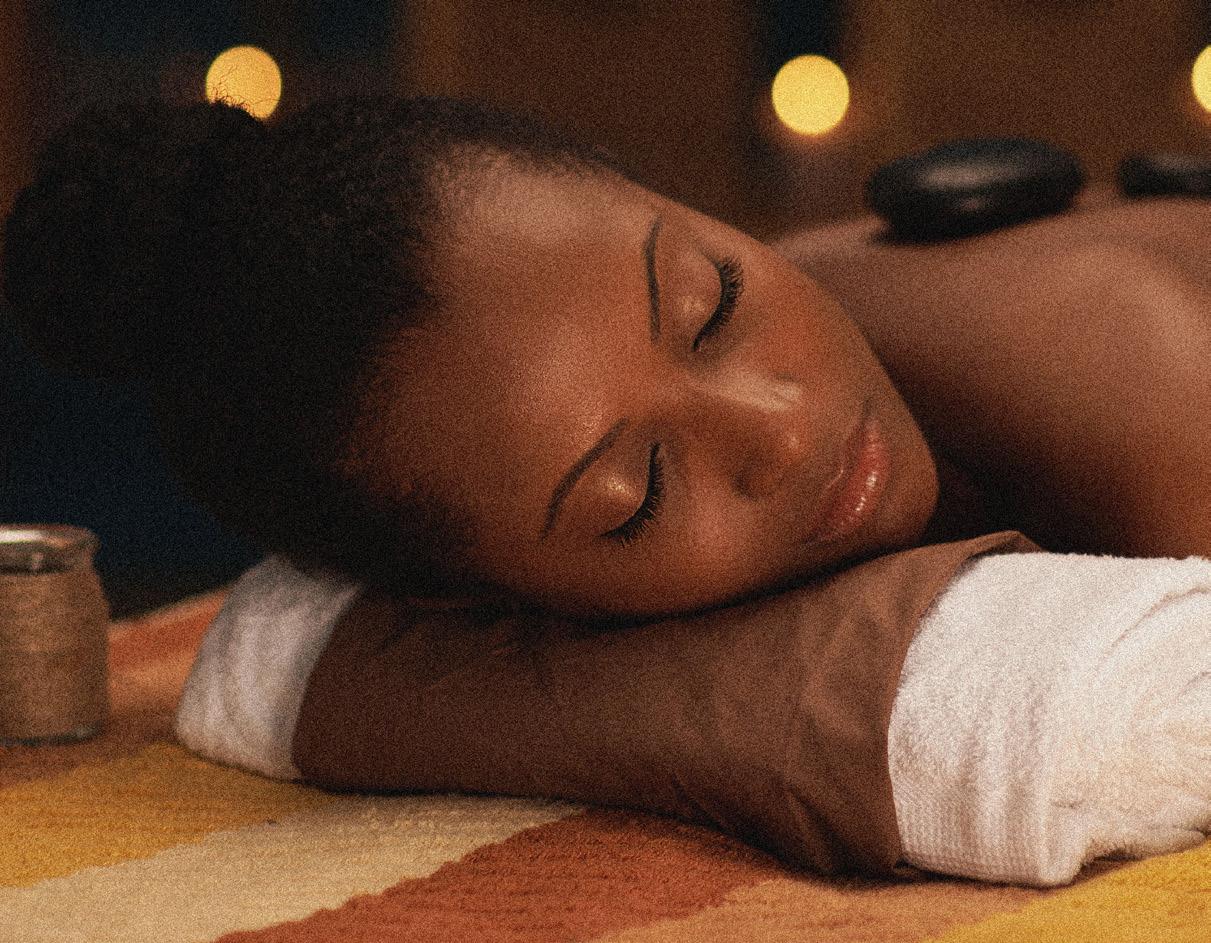
Why is it good for stress?
Adding scents that promote rest (like lavender, sandalwood, or clary sage) to a massage can help you slip into a deeper state of relaxation. This can lower stress in the moment, but can also have a knock-on effect in the days after.
What is it?
If you’re experiencing pain from muscle tension, deep tissue massage may be for you. Working on a deeper level, this massage targets particularly tense areas, helping to ease pain and encourage natural healing.
Check with your doctor before getting a massage if you’re pregnant or have an underlying health condition.
Why is it good for stress?
Deep tissue massage can be intense, so may not feel wholly relaxing at the time. The impact it has on relieving tension, however, is just as strong, helping you to feel lighter.
4. Hot stone massage
What is it?
A hot stone massage typically uses Swedish massage techniques, but with the addition of hot stones. The heat helps to relax muscles, so your massage therapist can work deeper on particularly stubborn knots.
Why is it good for stress?
The warmth radiating from the stones helps our tension melt like butter, in both body and mind. Making for a supremely cosy environment, hot stone massages should leave you feeling relaxed and ready for bed.
What is it?
A technique originating in India, Indian head massage works with the different acupressure points on the head, neck, and shoulders. Working on bringing your energy into balance, this massage stems from Ayurveda, an alternative medicine system.
Why is it good for stress?
Working to ease tension in the neck and head, this massage can be especially helpful if you struggle with headaches. According to Ayurveda, mental and physical health are connected, so Indian head massage can have holistic benefits.
Ready to try one of these massage types? Visit the Therapy Directory to find a massage therapist near you.
While parenting may be one of the greatest jobs in the world, it’s common to feel overworked and under-recognised. Part of this comes from an unequal split in the division of responsibilities, which can impact your partnership and connection. But it’s time to get this relationship back on an even keel
Writing | Jenna FarmerWhether it’s tackling the school run, remembering to get more nappies, or helping with homework, being a parent isn’t just about the fun stuff. Surveys, such as a poll by the University of Chicago Harris School of Public Policy and the Associated PressNORC Centre for Public Affairs Research, suggest that when we plan to start a family, most of us are intent on dividing parental responsibilities 50/50. But, despite these good intentions, it doesn’t often work out that way.
While there are now so many different types of families, many years ago, the traditional heterosexual family unit relied on mothers staying at home and taking on the overall parental responsibility. But things have
changed, with the Office for National Statistics reporting the number of UK mums in work reached its highest level for 20 years in 2022, with 75% employed.
Even with both parents often working, the parenting load doesn’t always level out. Research shows that, while it will obviously vary with individuals, the parental load is still more often on mums. In fact, the most recent census showed mums who worked still spent more time on unpaid household work and childcare (averaging 252 minutes per day combined) than men (158 minutes combined).
But we can’t forget about the ‘mental load’ either. Parenting requires us to keep a huge amount of information in our brains, from tackling school emails to
remembering you need to buy clothes in the next size up. In one in five heterosexual families, this load is equally shared, but in the majority it’s not, according to a study by the Australian Institute of Family Studies, with 78% of respondents saying the mental load was ‘always or usually’ left to the mother.
This split can impact both partners’ mental health, and even affect relationships, with half of couples arguing over parental responsibilities, according to a survey by ECLS-K. It’s also been linked to lower relationship satisfaction and wellbeing, with a report by children’s charity >>>
Bright Horizons finding that 52% of mothers face burnout due to the additional responsibilities on their shoulders.
“All too often, the burden of parenting responsibilities falls on one person, and this can lead to resentment, frustration, and an increase in arguments,” says wellbeing consultant and therapist Claire Elmes. This may also be heightened when one parent takes on the role of stay-at-home parent and feels as if they get no break, or aren’t appreciated.
“When one parent works more than the other, or one stays at home, the arguments can start about whose day was more difficult,” Claire adds. “The job
of parenting is 24/7, and your brain rarely gets a rest, yet it goes unpaid, unrecognised, and under-appreciated. We need to recognise that raising children is just as tiring as a nine-to-five, and that it is a job in its own right.”


The good news is that both partners simply recognising that the parental divide exists, and is a problem, can be a really positive step. “It’s
The job of parenting is 24/7, and your brain rarely gets a rest, yet it goes unpaid, unrecognised, and under-appreciated
essential for a healthy relationship that we learn to appreciate each other, and acknowledge the division of labour, so that each party feels recognised,” says Claire.
Much of parenting is the ‘little things’ that the other partner might not notice. For example, the parent who takes on the school run is automatically bombarded with letters and updates. Start with calmly getting together and making a list of both your current responsibilities. Seeing it in black and white can really help to make it clear that the labour isn’t split fairly.
This can help you communicate in a factual way, rather than being emotionally-charged. Think ‘At the moment, I pack the kids’ bags before school and sort breakfast – so if you prepare those the night before, I can take over in the morning,’ rather than ‘I do everything and you never help.’
It’s also about working together to figure out what might be a stress trigger, and how you can support each other.
“Verbalising how you feel can start the process of healthy communication, but it is important to listen, too. It might be helpful for couples to label the times of the day they feel most stressed, and work out a system between them. If one parent gets the children ready for bed, can the other pick up the toys and get the pyjamas ready? If one parent feels that their head is foggy after
work, can they take the children out for a short walk while the other has space to breathe? See if your routine has wiggle room, and focus on alleviating stress for each other,” says Claire.
The idea is to discuss things before the arguments begin. But if you find things getting heated, take a step back. In the middle of bath time or on the school run is not the ideal time to air your grievances.
“It’s important to communicate concerns when both parents feel safe, and can regulate their emotions,” Claire explains. “In the heat of the moment, it might be best to revisit the situation when the children are in bed, or playing in another room. Verbalising that you feel stressed and unable to explain yourself, but would like to resume the conversation later can give you both time to reflect.”
Whether you’re a stay-at-home parent or in work, you can find yourself dismissing your partner’s situation. If your partner stays at home, you might think they can’t possibly understand the stress of a commute and workplace dilemmas. If it’s you that takes on more childcare, you may resent your partner being out of the house most of the day (and being able to drink a cup of tea in peace!).
“Verbalise that you recognise your partners work, and are thankful for the way they raise your children. Believe that their day was difficult, and ask them if they want to talk about it –sometimes all it takes is a listening ear,” says Claire.
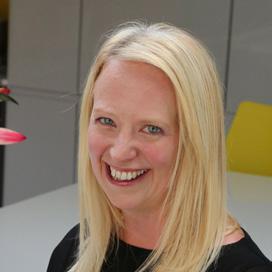
If it’s you that’s out nine-tofive, then don’t head straight to the sofa when you arrive home, however tempting it might be. “Do something when you get home that you know they will appreciate. A hot cup of tea, unloading the dishwasher, taking out the bin without being asked, or even just playing with the children, can give them one less thing to think about, and will bring you closer as a team. It’s all about recognition and working together. It shouldn’t just be helping when asked, but taking initiative and being a team.” An unequal division of parenting load is a common problem. But being open, appreciative, and willing to negotiate can help you find a proper balance that works for both you and your partner.
Jenna Farmer is a freelance journalist who writes about life as a mum with a speech delayed child on her blog mumernity.co.uk and Instagram @mumernity
Is it possible to move forward from a traumatic experience, and discover new perspectives and positivity on the other side?


We all hope to avoid serious illness, loss, and violence, as we journey through life. However, the unfortunate truth is that 75% of us will experience a traumatic event at some point during our lives, according to PTSD research published in Biological Psychiatry. Most of us have heard the words by Friedrich Nietzsche: ‘What does not kill me, makes me stronger,’ and in the midst of such a struggle, you may wonder whether this can actually be true. Although the media frequently covers the negative impact that stress and trauma can have, receiving less attention is the notion that supports Nietzsche’s aphorism: post-traumatic growth. This is the experience of positive psychological change, or a shift in perspective, following adversity or trauma. It can lead to profound changes in your
values, how you behave, and your relationships with others.
The term post-traumatic growth was first coined in the 90s by researchers Tedeschi and Calhoun, who define it as a “positive psychological change in the wake of struggling with highly challenging life circumstances”. Their research found that it entailed five areas of personal growth, including an appreciation for life, improved relationships with others, new opportunities, increased personal strength, and spiritual change. This could present in different ways, for example, you may feel that following the loss of a loved one, you have an increased appreciation for life. You may find that a difficult experience strengthens the bond with your loved ones, improving your relationships. After a period of illhealth, you may take up spiritual wellbeing practices, such as yoga
and meditation. These could all be part of the experience of posttraumatic growth.
Although there has been an increased focus on resilience –the personal attribute helping you to bounce back – following the pandemic, post-traumatic growth goes much further than this. It is not just a return to how you felt before, but a powerful renewed perception of the world around you.
It is important to note that not everyone will experience posttraumatic growth. There should not be undue pressure put on ourselves or anyone else after a difficult experience. We have to allow ourselves to heal, and to accept however it is we are feeling – with no pressure or rush to find a positive in what’s happened.
This isn’t a concept that’s trying to push us into hiding away from our true feelings, >>>
What is post-traumatic growth , and how can you increase the likelihood of experiencing it?Writing | Anna Gaunt

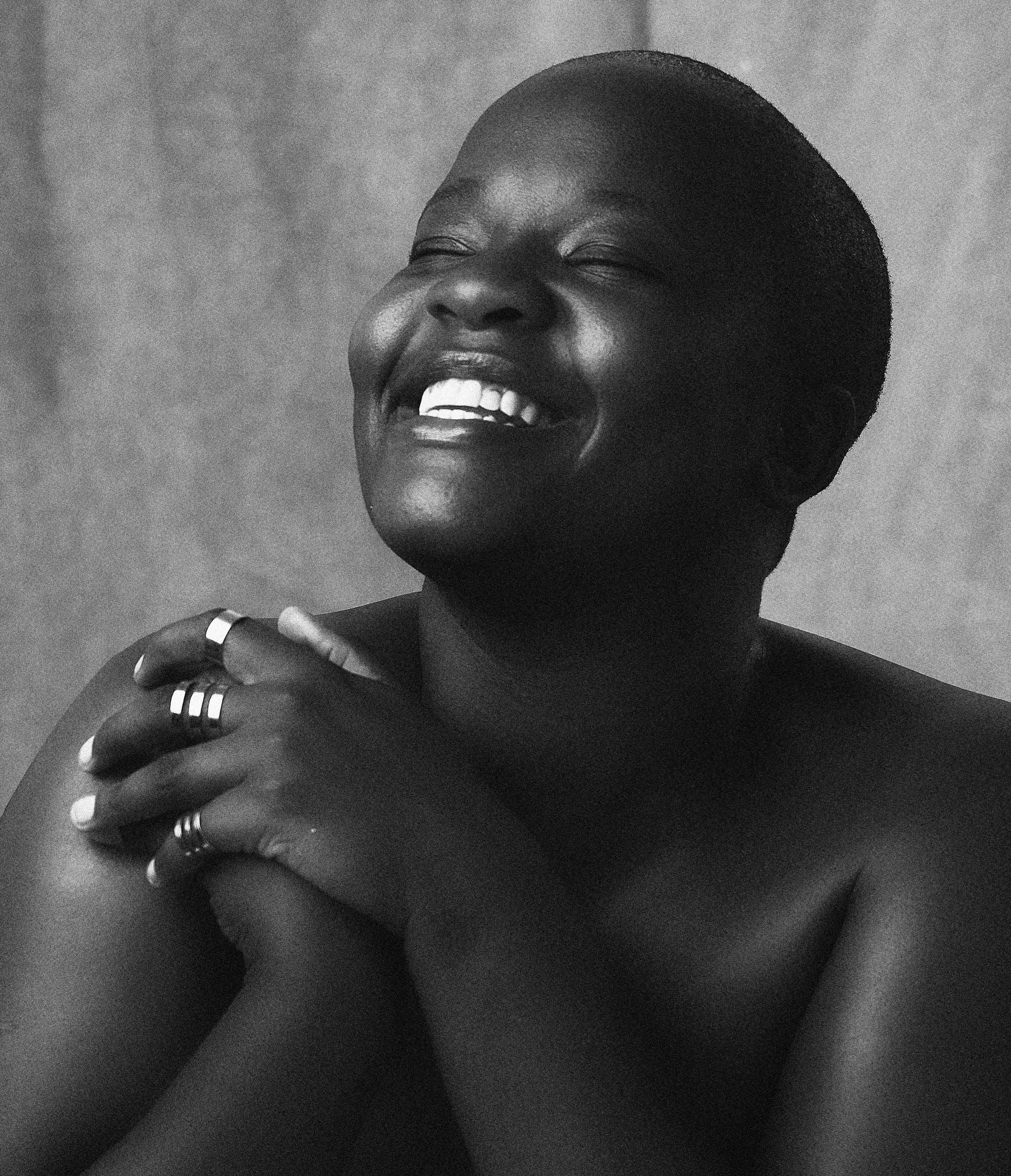
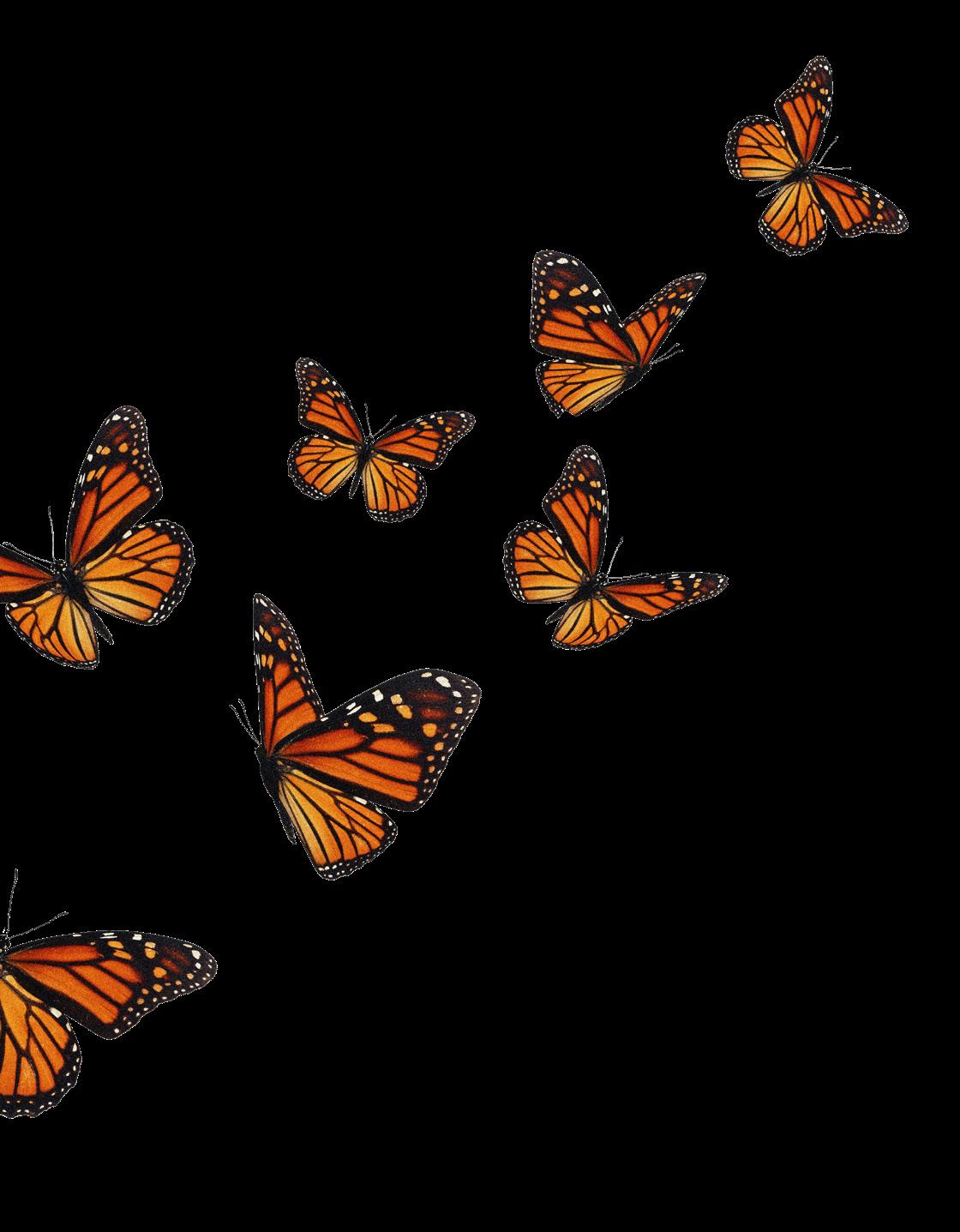
It is not just a return to how you felt before, but a powerful renewed perception of the world around you
especially if we’re not ready to move forward, but rather to provide hope that there could be a chance to take something good from a bad situation. Research shows that up to half of us who have experienced a traumatic event experience post-traumatic growth. People can and do excel after trauma, and there are certain factors in your control that could help you along the way.
Having a strong support network is vital to healing and growing after adversity. Your support network can include friends, family, support groups, health professionals, and even pets! Socialising with friends can boost positive emotions, leaning on loved ones can help us to feel less alone, and health professionals can help us to deal with and process trauma. A social support network is vital to helping people overcome post-traumatic stress symptoms, and stronger connections are linked with higher levels of post-traumatic growth. When going through a difficult time you may not feel like socialising, but if you can take the step to reach out to a
loved one, it can make a huge difference to your wellbeing.
Self-compassion entails recognising that you are human, and deserving of the same compassion that you show to others. It includes treating yourself kindly, and through mindfulness, acknowledging your feelings and emotions without suppression or overidentification. When going through a difficult time, it is important to know that you are not alone, and that your feelings are valid. You can practise selfcompassion through imagining you are talking to a friend going through a difficult time, either in your head, aloud, or written down. There are many benefits to practising self-compassion, including a better ability to selfregulate, adjustment to pain, and overall positive psychological functioning, which can contribute to the experience of post-traumatic growth.
Post-traumatic growth should not be used to avoid your pain or the pain of others, and can, in


fact, coexist with post-traumatic stress disorder (PTSD). Pain and emotions following a difficult experience are unavoidable, and can be difficult to deal with, but they can also be used to your benefit. Sitting with your emotions and processing them in your own time, in a way that feels right for you, can help you to experience post-traumatic growth. This may be through self-reflection, writing it down in a journal, or professional help such as counselling or coaching. Research by the University of Carolina in 2021 found that the more you think about the adverse experience, the more likely you are to experience positive change.
A renewed perception of the world can lead to new opportunities and vice versa, new opportunities can create a renewed perception of the world. If you have experienced adversity, it can sometimes present opportunities that otherwise would not have arisen. Your challenges may lead you to meet new people, discover new passions, or connect you to a new
Self-compassion entails recognising that you are human, and deserving of the same compassion that you show to others
a difficult experience, you may feel inclined to volunteer or give back to a charity that supports others in a similar situation. Openness to these new opportunities can lead to new paths and possibilities in life, and could be a catalyst for growth.

Finally, it is important that you do not put pressure on yourself
or others to feel a certain way after any type of trauma. Although there is no timetable for growth, time is important for healing, and post-traumatic growth can take years for those who do experience it. Every one of us is unique, and so are our experiences, and the lens we view life from, so we cannot judge, assume, or expect a particular experience.
Just know, there is always hope – whatever may have caused


suffering in your life, it is not the end. Given the right support, tools and mindset, you may be able to experience profound positive change, and see the world in a new light again.
For more information on PTSD, visit ptsduk.org, or speak confidentially to a professional from the Counselling Directory.
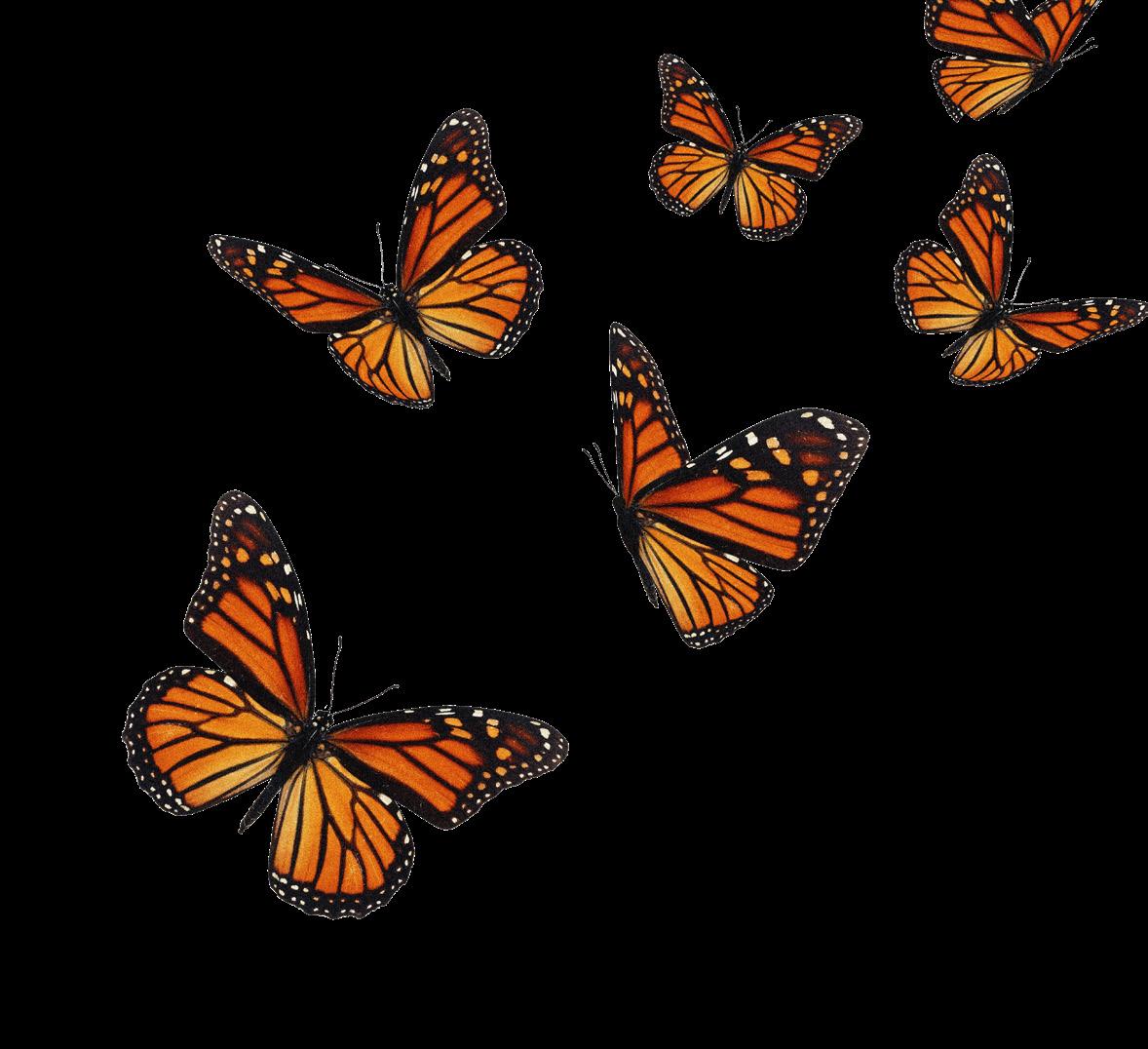
At this monumental life moment, how can we find happiness in new ways?
Writing | Nicki BannermanAs parents, we know children will ‘fly the nest’ at some point. But, although we ‘give them wings to fly and roots to grow’ it doesn’t make the void (and the shock!) any more bearable. The years fly by with memories, company, and life-long bonds formed. Suddenly our futures feel daunting and bleak, but they have their own lives, and we have to somehow find our own dreams in all the turmoil.
It dawned on me that we spend most of their lives preparing them to leave us, but we never prepare ourselves for when they do. On my son’s results day, the reality of my certain ‘abandonment’ made me cry with pride and a heavy heart. I searched for a new purpose, and this is what I found.
Grieving for an empty nest can last months – that’s a long time to feel sad. I needed an escape from my everyday life. Instead of empty bedrooms and crying on the sofa, I contemplated
where I could find joy in the silence as a bridge to my next chapter.
Travelling to new places, surrounded by art, culture and people-watching, always made me happy. As a teenager, I yearned to learn languages in Europe. So, when an opportunity for a language course in Florence arose, my heart soared, and I knew that was the place for my broken heart and troubled mind.
Focus on what makes you happy. Ask yourself, when did you feel free doing what you love? Who did you want to be when you grew up? What are you passionate about? What have you never had time to do? Take steps to embrace those dreams, and evolve.
With a fear of flying and heights, I booked a ticket to Dubrovnik days after dropping my youngest at university. My flight was better than I imagined, as I moved at my own pace, laden with yummy treats, and settled in to enjoy a
film in peace. I climbed the very high walls of the Croatian city alone, avoiding a group tour to not feel rushed, scared, or judged – I could always come back down again, if fear took me over. Instead, I stopped to take photos and enjoy spectacular views I would never have seen if I hadn’t done it.
Pushing yourself out of your comfort zone can make your happiness soar. What has fear prevented you doing so? Is there a challenge you could try at your own pace? What is stopping you, except fear itself? You may surprise yourself! Take the time to face some of your fears alone, without judgement.
Although raising children can be blissful, there are sacrifices. Singing was one of my passions, and joining a choir was on my ‘todo list’, but the timing was never right as evenings were busy and clashed with family mealtimes. When the nest is empty, suddenly, you have time.
I recently joined an awardwinning soul choir, and now have a new community of like-minded singers. There is even a plan to go ‘on tour’, which I think is rather amusing!
What hobbies could you take up again that you stopped doing? Are there communities you would love to be more involved in now you are less busy? Is there something you would love to learn that you could commit to now? Find joy in a like-minded

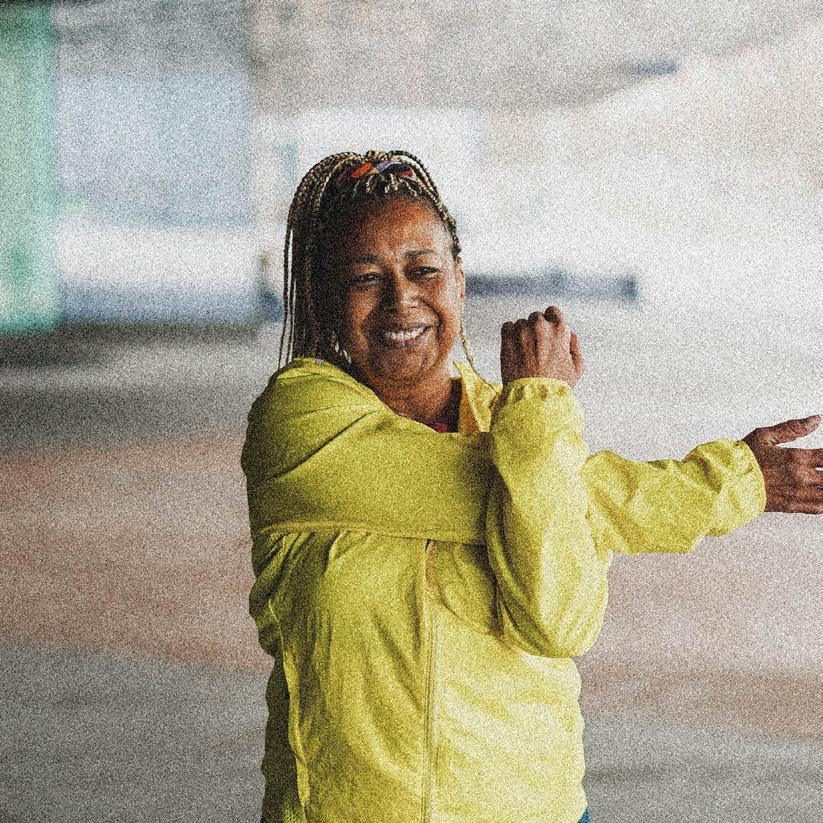
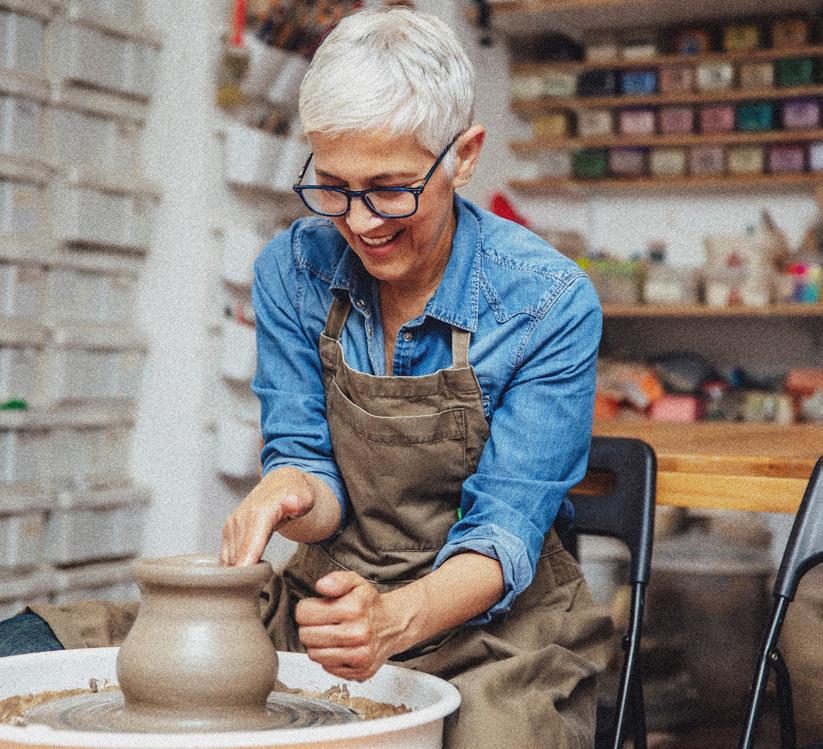
community with common interests.

Be an inspiring role model
Whether you want to change your work, your home, your interests, or who you spend your time with, you have the power.
Remember, others would love to be exactly where you are now, with the freedom to make their own choices, and ‘live’ rather than exist. I would encourage anyone to take that first step into
the unknown. Do new things for yourself, such as mindful self-care. Write a list of places, and people that make you happy. Plan social events and trips to visit your children (you have more time than them now!) Trust and empower yourself. And change things that aren’t working. If your kids can see your independence, and that you’re OK without them, then they too will be inspired, and be OK without you.
We spend most of their lives preparing them to leave us, but we never prepare ourselves


We all get that Monday morning feeling – the energy slump as the working week resets. But imagine if you could flip the script and have a positive start to your week instead? It’s no pipedream; here are nine ways to begin with a positive spin, and kick your productivity into high gear
Writing | Bonnie Evie GiffordThat first day back at work after your weekend; urgh, is there anything worse? Even if you love your job (and you’re a morning person), there’s something about dragging yourself out of bed and trying to get back into the weekly routine and work mindset that makes a surprising percentage of us feel anxious, lethargic, and reluctant to get started.
Nearly 62% of us dread Mondays more than any other day of the week, according to a survey by The Sleep Judge. We feel more tired, and even spend longer complaining on a Monday, thanks to making the most of late nights, no alarm clocks, and weekend lie-ins (which can throw your body clock off), not to mention over-indulging in takeaways, meals out, and alcohol (which can leave our bodies struggling to keep up).
But what if we didn’t need to start our week with a reluctant sigh and an excessively large coffee to get through the day? What if you could kickstart your week with a boost of positivity and productivity, to help you actually look forward to the week ahead? Here’s how…
Getting your week off to the right start can take a little planning –but it’s more than worth it. Take time out at the end of your last working day to create a quickstart to-do list for your first morning back. This could just be a few bullet points of urgent tasks to take a look at, a couple of notes on any outstanding emails or communications you are waiting on ready to chase up, or an outline to prepare yourself for a morning full of meetings.
The afternoon and evening before you head back to work are just as important. Sunday night anxiety can feel like it steals precious weekend hours from us, as we lose time to doom-scrolling, give in to the temptation to get a head start on emails, or lay awake late into the night, dreading the next day. To avoid the negative night-before cycle, try to do something physical. Go for a long walk, cycle, or swim. Exercise can boost your mood and improve your physical health, as well as helping you to physically feel ready to fall asleep.
If there’s an underlying feeling of anxiety, worry, or dread, don’t ignore it. Take some time to think and ask yourself: what is it that is worrying me? Is this something I can fix now? Writing things down can be a big help, and can also be handy in tracking any unhelpful patterns or habits that you may >>>
want to address, so it could be worth exploring journaling.

Just because you’ve had a couple of days off, doesn’t mean you have to come back feeling 110% and ready to go right off the bat. Be kind to yourself. Take some time to catch up on emails or chat with colleagues to find out more about any new tasks and priorities. Work through your todo list. If you can, schedule some planning time for late morning or early afternoon. This can help you to slot in any new, urgent tasks, reassess your existing priorities, and take things at a more manageable pace rather than feeling overwhelmed.

Having something to look forward to can help the day to feel more manageable (as well as set a more positive tone). This could be anything, so why not try to:
• Save your favourite podcast for your commute.
• Wear something that makes you smile – like your favourite outfit, a pair of funky socks, or your lucky underwear.
• Make the ‘good’ coffee at home to start your day.
• Prepare a special breakfast or lunch.
• Pick today to be the one treat day, where you get a coffee, snack, or lunch on the go.
Breakfast is the most important meal of the day, yet nearly one in four of us skip it – according to a survey by McDonald’s. Starting off your day with a healthy, tasty, and nutritious breakfast can help to provide your brain and body with the fuel it needs to see us through. But how do we know what’s the best breakfast to get us started? Including a good source of protein, such as eggs, salmon or tofu, is a great option, as it helps to balance your blood sugar levels, and supports muscle building and recovery.
You might want to try porridge, as oats provide soluble fibre, which can help to reduce cholesterol, as well as iron, magnesium, zinc, and B vitamins. Or Greek yoghurt could be a great addition, being rich in calcium, potassium, and vitamin B12. You might want to top a bowl off with some chopped fruits for a extra flavour.
Making time for – and actually taking – a break can give something to look forward to, as
well as help you to feel rested and rejuvenated. Taking breaks can actually help you to feel more focused without feeling overwhelmed or burned out. Why not try the Pomodoro Technique – where you take a short fiveminute break after 25 minutes of focused work?
6. ACKNOWLEDGE AND EMBRACE YOUR FEELINGS
‘Negative’ feelings can be challenging. But when we push down or refuse to acknowledge unwanted or unpleasant feelings, we can risk making ourselves feel worse. Remind yourself: it’s OK to feel how you’re feeling, whether that’s good or bad. Normalising, understanding, and accepting
ourselves and our emotions is far more beneficial in the long run. So give yourself permission to feel a little bit grumpy – that feeling isn’t going to last forever.
7. PACE YOURSELF: AVOID OVERTIME, WORK CREEP, AND THE ‘JUST ONE MORE…’ MINDSET

Setting – and sticking – to deadlines can be tough. But having healthy workplace boundaries doesn’t just mean switching your phone off at the end of the workday. When work starts creeping into your home life, you no longer have the much-needed break to let your mind rest, relax, and unwind. So, don’t let an unexpected influx of
emails or new tasks start seeping into your breaks or taking over your lunch time. Avoid checking your emails before your workday starts, or letting them creep into your evening routine, on your commute home, or while trying to relax.
8. TRY SOME POSITIVE AFFIRMATIONS
Helping you to feel calm, focused, energised, and uplifted, in essence, positive affirmations are a simple way of grounding ourselves and reminding us of our own strength. They can act as a small, helpful reminder of our own ability to take back control over our mindsets, and reframe things to help us get through challenging times. Why not try one of the following: ‘I am the architect of my own life’; ‘I do not need to prove myself to anyone’; ‘My thoughts do not control me, I control my thoughts.’
9. GIVE YOURSELF PERMISSION TO…
Not every day is going to be a winner. Putting pressure on yourself to achieve perfection adds extra layers of stress that you just don’t need. Give yourself permission to:

• Get through the day.
• Do the best you can.
• Take things slowly.
• Take a deep breath.
• …And leave some tasks for tomorrow.
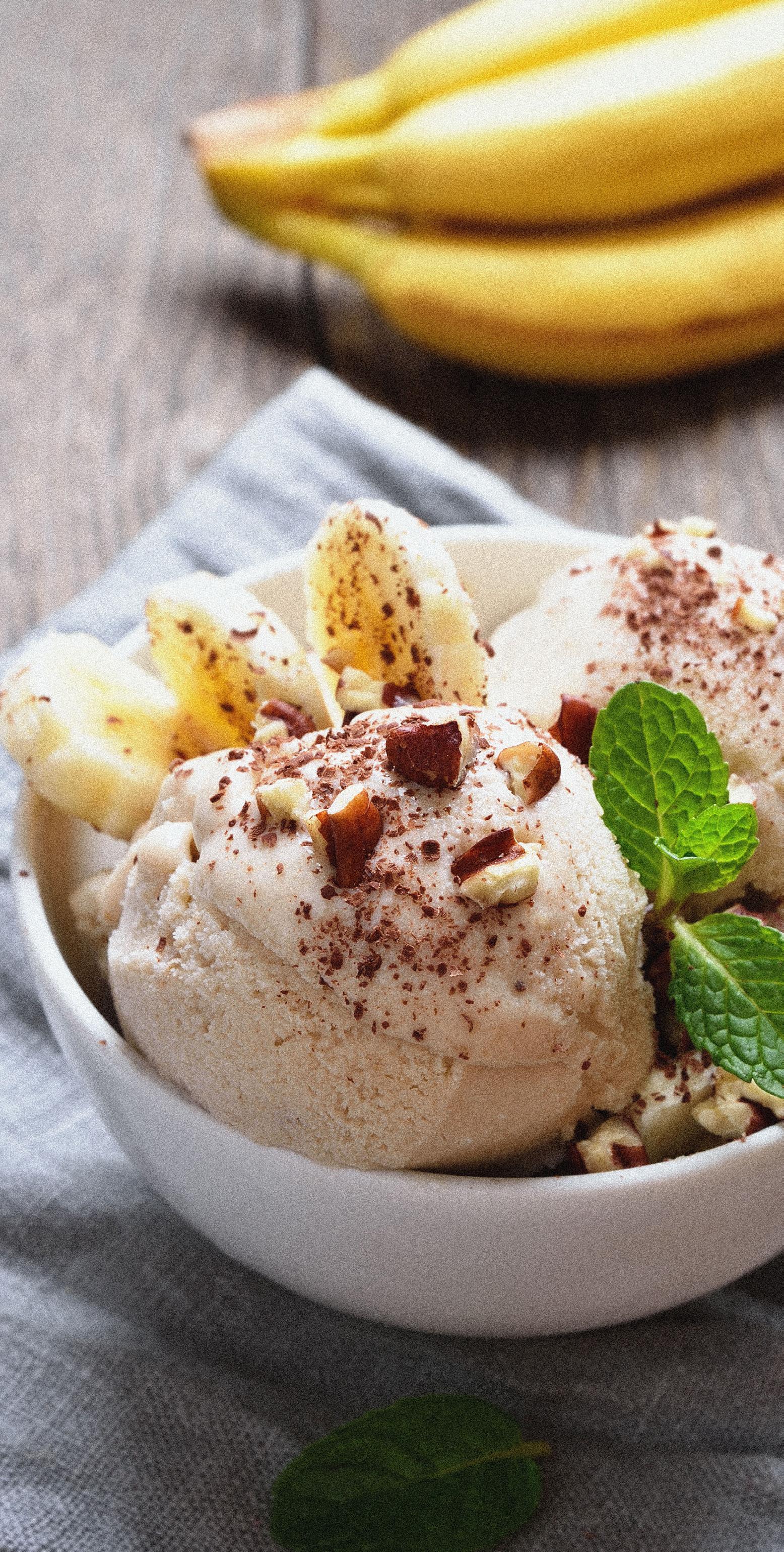 Writing | Suzanne Anderegg
Writing | Suzanne Anderegg
With the start of summer, and holiday plans on the horizon, many of us begin the season with the intention to eat more healthily – or at least, as fresh as possible. When the weather is mild, it couldn’t be easier to up your five-a-day, and with so much amazing local produce in season, we’re spoiled for choice. But as the months drag on and the temperature rises to sweltering, it can take a willpower of steel to resist the temptation to buy all the ice cream van has on offer. And when you’re warm and lethargic, the idea of rustling up a healthy snack can feel like a bit too much of an ask.
These two recipes are personal favourites for when the weather grows unbearable. When you or your family are running out of energy and need something cool, you can make these in a matter of minutes. Best of all, the ingredients are super affordable – in fact, you likely have most of them in stock already!
Serves 1
This healthy dessert can be made in seconds, as long as you pre-freeze the sliced banana for a minimum of 2 hours or until frozen. Bananas can be stored in a freezer for up to 1 month.
For the ice cream:
• 1 frozen banana, sliced
• 1 tbsp peanut butter (100% peanuts), optional
For the toppings (optional):
• Handful of fresh or frozen berries
• Chopped nuts or seeds
• Toasted oats
Method
• Place the banana slices in a food processor, and pulse until it is blended and creamy. For an extra shot of protein and flavour, add a tablespoon of peanut butter while blending. Be sure not to over-blend. You want to be able to scoop the mixture into bowls. If it becomes too soft, put it back into the freezer to set.
• Scoop two balls of ‘ice-cream’ into a bowl. Sprinkle with your chosen toppings and serve immediately.
Tip: Blending the banana increases the ‘free sugars’ in the recipe (when a food is processed and the naturally occurring sugars are separated from the nutrients). To protect your teeth, drink water when enjoying this snack.

This deceptively simple fruity snack is quick to prepare, or can be made ahead of time and stored in the fridge. It will be enjoyed by all ages, but also makes a great afternoon snack for little ones in your family.
Ingredients
• 150g plain Greek yoghurt
• 150g fresh or frozen berries (defrosted)
• 1 small banana
• 25g oats (around 3 tbsp)
• 1 tbsp chopped walnuts
• 1 tbsp sunflower or pumpkin seeds
• Place around a third of the yoghurt into the bottom of a 250ml drinking glass.
• Add a third of the berries, layering them on top of the yoghurt.
• Slice a third of the banana to make the next layer of the sundae. Sprinkle on a third of the oats.
• Repeat steps 1–2 twice more until the ingredients are used up. Sprinkle the top of the sundae with the walnuts and seeds.
Tip: You can adjust the ingredients as necessary to make mini versions for the smaller tummies in your family. Or turn it into an activity and make them together!
These cooling recipes are easy to make, and are a great way to increase your fruit intake, and add some more variety to your diet.
The berries and bananas are packed full of nutrients, particularly potassium, magnesium and vitamin C. Oats are a great source of carbohydrates and soluble fibre, which helps to release energy slowly, keeping your blood sugar levels stable. Oats’ soluble fibre –in the form of beta-glucan – helps to lower your cholesterol and promote gut health. Oats are also extremely nutrient-dense, and contain important minerals such as phosphorus and copper.
Peanut butter, nuts, and seeds are all rich sources of protein, fibre, and healthy fats, and adding Greek yoghurt will contribute a healthy source of calcium and protein.
Each of these cool-down snacks is great for recovery after a workout. The carbohydrate in the fruit, oats, and Greek yoghurt will be stored as glycogen, helping to top up depleted energy and maintain energy levels throughout the day. While the protein in the yoghurt, nuts, and seeds will help to repair tired muscles. With the right balance of carbohydrates and protein to aid your recovery, you will be ready to face the next workout, and the heat, again.
Suzanne Anderegg is passionate about helping people achieve a healthy diet and meet their individual health needs. Find out more on her profile on the Nutritionist Resource.

For adolescents, the world can feel like their oyster – so much possibility, so many exciting visions of the future, but, at the same time, so many unknowns and distractions. Between developing socially, contemplating their futures, growing responsibilities, and looming exams, how can teens and students best set themselves up for success?
Whether you’re a parent, guardian, teacher, or friend, the following are some useful ideas that have come out of my sessions with young people, but, of course, can still be helpful for anyone to apply, regardless of their age. I find the key to getting results with young people is to take accountability, encourage them to come up with their own methods, and focus on what they can control. As a coach, I can advise and guide, but, ultimately, they have to make the processes personal to them, and want to take action.
Making some simple changes to morning and evening routines is an effective starting point. Often small changes in lifestyle can really set ourselves up for success. I often use the question: what would your future self thank you for?

Evening
• Prepare the night before. Ensure all books are ready, devices charged, and any snacks out. Setting clothes out uses an approach of satisfaction, which is a decision-making strategy where an adequate result is good enough. This could involve wearing the same type of clothes each day, like Steve Jobs did. This streamlines the process and limits decision making, saving energy for bigger choices throughout the day.
• Have an evening wind down. This helps to reduce stress and improve sleep, and may include using softer lights, reducing
screen time before bed, and some sort of journaling practice.
• Create a plan for the next day. To make this personal and fun, you could call this a ‘daily victory planner’. This may include key things they need to get done, exercise they are committed to, a gratitude practice, and a reward system.
• Aim to wake up 30 minutes earlier. See this as ‘bonus time’.
• Drink a glass of water first thing. Kick start the body for the day.
• Enjoy some quiet time. Creating their own thinking time, or meditation practice, can help to approach the day with a calm and less reactive mindset.
• Look at their day ahead. What lessons do they have? What would a successful day look like?
The pressures and mounting responsibilities on youngsters can feel overwhelming, but, as our expert columnist Kieran Townsend reveals, here are three simple and effective ways to help the adolescent in your life thrive!Kieran is a youth development coach and mentor. Find out more by visiting the Life Coach Directory Kieran Townsend BA hons NLP MHFA
Create a tight focus bubble
This is an approach I often use for students working on projects or revising for their exams.
• Create a portable productivity system. This is simply about ensuring they have all the essentials needed to help them study at opportune moments, such as a computer, books, headphones, and stationery.
• Have a personal study playlist. Combine this with noisecanceling headphones for focus and flow.
• Consider the environment. This is about knowing where they work effectively, so, for some, it might be staying later at school, others may be productive at
home, or a neutral venue such as a coffee shop.
• Adapted Pomodoro Technique. Working for 20–30 minutes followed by a short power or reset break, and then another block of study. The break also becomes the reward for focused study, which helps motivation.
• Act like someone is watching. This is a quick mindset trick to stay focused and raise standards.
This is a process I have adapted from James Clear’s book Atomic Habits, which focuses on starting small and building momentum with a series of ‘mini wins’ to reinforce this identity. Carving
out an environment in which we make it as easy as we can to execute actions for our goals is an important part of the process. The goal is to aim for 1% better each week, which is attainable, and builds consistent progress.
• Decide your identity
• Quick habits to support this
• Consider the environment
• Actions to take
Example:
• Identity: I am someone who gets my work completed early.
• Two-minute habits: checking diaries at night to know when their deadlines are.
• Environment: ensuring their calendar or diary is accessible at all times.
• Actions: creating time to plan ahead at the start of each month; adjusting study time as deadlines approach; a productivity system which works for them.
Tip: Use the ‘never miss twice approach’ to help keep them on track, so if they miss a study session, or let the positive habits slide once, know it’s not the end of the world, but be sure to get back on track for the next one.
Creating, and maintaining, healthy and productive habits isn’t always easy, so show them compassion if progress a takes a little time. Know that every little action is a positive step forward, helping the teen in your life to thrive through the challenges of adolescence, and grow towards the goals they’ve dreamed of.


“Isn’t it nice to think that tomorrow is a new day with no mistakes in it yet?
ANNE OF GREEN GABLES , LM MONTGOMERY

There are moments in life when adrenaline is coursing through your body and your pulse is racing, but decisions still need to be made. It can be a crisis that has happened in a split second, something that has been a constant in your mind for years, or it may be something that has been building to a tsunami. In these moments, when you sit on the crest of the wave, what happens? Does being in a crisis bring clarity, or confusion?
A crisis can leave you awash with emotions, and has both a physical and neurological impact, explains psychotherapist Gin Lalli, who says: “When we feel threatened, we go into the fight, flight, or freeze mode. Our primitive instincts literally take over and we go into ‘survival mode’. This is very useful in situations like hearing the fire alarm, or hitting the emergency brake in the car. >>>
It’s instinctual and immediate. Unfortunately, it’s much the same for all types of crises. The primitive part of your brain – the amygdala – kicks in and tries to look after you.”
In a crisis, when action is demanded immediately, this can be life-saving. But when your brain goes into survival mode when you are not in immediate danger, it will engage all of the measures for survival. Physical symptoms include quickened respiratory and heart rates, as well as hypervigilance and hyper-focus. This happens at the expense of the ‘advanced brain’, which becomes secondary until we calm down. However, in a prolonged crisis, we can face months and months of high alert. It’s exhausting.
Cognitive function shifts, and, therefore, so too do our decision-making abilities. Gin continues: “The primitive brain is not innovative, therefore it’s not creative; it can’t come up with solutions, it’s just in pure survival mode.” She argues that, as a result, any decisions we make in this state will be irrational and emotional. “They will lack clarity, and probably falsely assess the situation,” she states, “rather than being objective, rational, and intelligent.”
As the crisis continues, there is a ‘rewiring’ in the brain as the neural pathways to the amygdala are strengthened. Our basic instincts become our strongest instincts; and although they are designed to keep us alive, they can also overwhelm us. Panic can set in, or an urge to make an immediate
decision without balanced consideration.
Gemma Metcalfe-Beckers is an entrepreneur and mother of two. She founded her communityled fashion brand, Strong Girls Club, after experiencing PTSD following the birth of her second daughter. She agrees with Gin that decision-making while in the middle of the storm would have been impossible. However, the crisis provided both the core mission for her business, and the impetus to found it. She says: “I had to be on the pathway to recovery in order to start the business. I started it at the point where I’d found the life raft, and was in the process of healing. The business itself was a huge part of my recovery.”
Gemma adds that creating the community around SGC was a key point in her journey back to health. “I don’t think I would be as strong as I am now, had I not started the business when I did. It gave me a wonderful sense of purpose, and it also showed me what a positive impact I was having on others. It helped me to feel found, when I felt truly lost before.”
Sonia Ovenden is a TEDx speaker and author. She faced a health crisis that she says did not bring clarity in the traditional sense of a clear plan of action, but did force change. It brought an urgent awareness of how close she was teetering to burnout. She says: “Prior to the health scare, I was living life almost on autopilot. I would get up, go to the gym, go to work, come home, have dinner, watch
TV, and go to bed, and the next day I’d hit the repeat button.” She knew she was in a downward spiral, but it wasn’t until she faced a potentially life-threatening diagnosis that a decision was actually made to alter her life. “Deep down, I knew I was reaching burnout, but hadn’t reached a point to decide for change. I’d toyed with the idea of things changing, but nothing ever did, or should I say, I never made the decision. So, yes, the health crisis was the wake-up call I needed to propel the decision to change my life.”
For Sonia, the decision to quit her corporate career and find a new path was made after the crisis had been averted, but when she was still reeling from the psychological impact of it. The crisis brought the need for change – her mental fatigue and unhappiness – right to the surface where she had to face it. She says: “Decisions are often made more clearly when a desire for the new, or the discontent with the old, drives the process. While a crisis may feel awful at the time, it often brings with it a level of clarity.”
Solution-focused psychotherapist Gin Lalli suggests the following:
• Recognise what is happening (are you panicking?) and focus on becoming calm before you make any decisions.
• If you are panicking, focus on your breathing, walk away from the situation, even sleep on it if you can.
• Gather as much information as possible; make sure you get facts. Do not make assumptions.
• Ask for help, speak to experts who are used to these situations, e.g., if your crisis is financial, can you speak to a financial advisor? If your crisis is to do with health, speak to a medical professional – again, you’re gathering facts not assumptions.
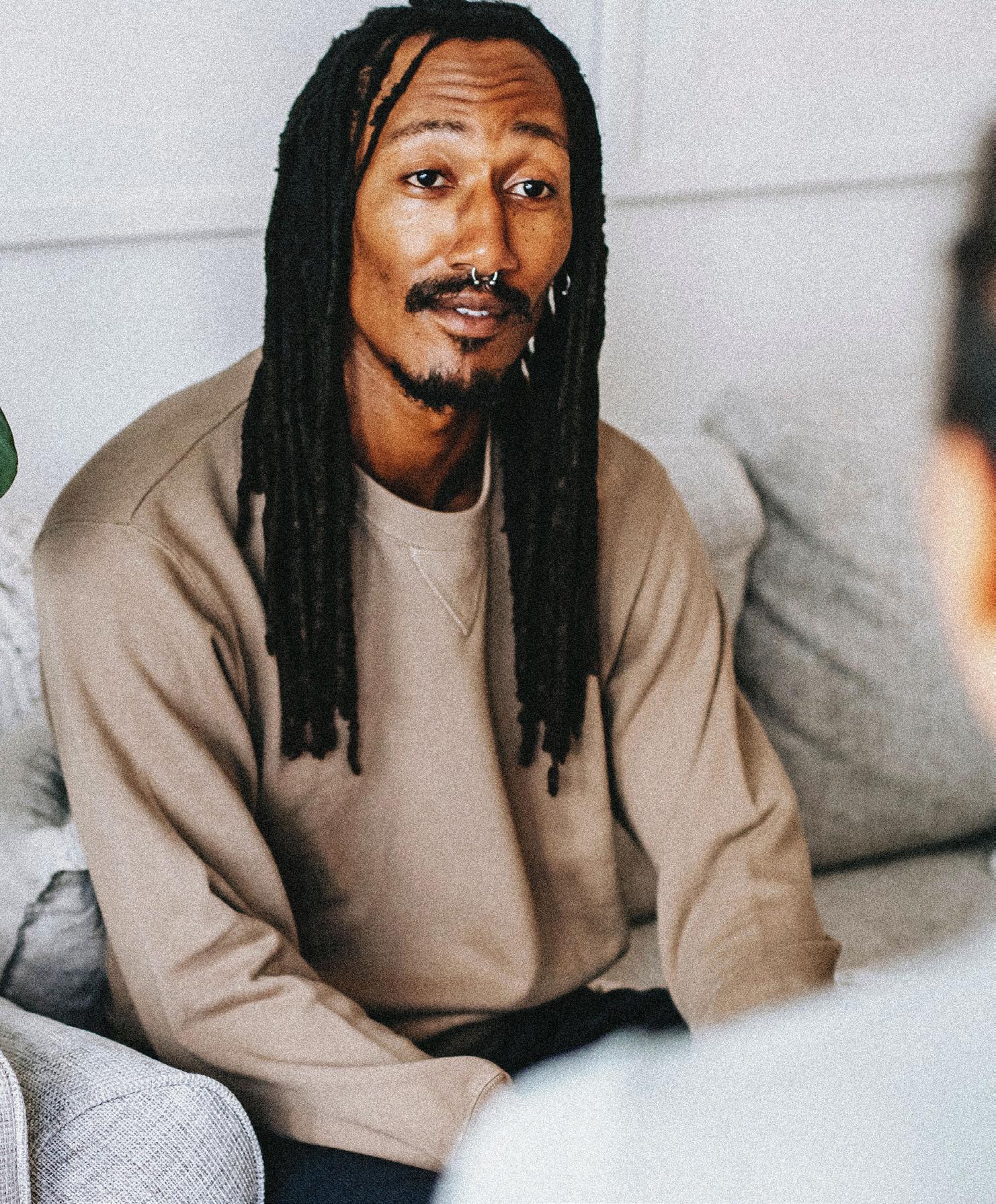
• Keep checking in with yourself – are you eating, sleeping, and exercising properly? This will keep your intelligent brain engaged, objective, creative, and rational.
• Make sure you can offload your ‘negative’ emotions in a safe way; speak to a trusted friend, family member, or therapist.
For her, personally, it was facing what she needed more of, and less of, in her life. It brought feelings and thoughts she had internalised to the forefront of her mind, and then she could make a balanced decision as to what to do next. Without the crisis, she admits she would still be on the corporate treadmill – if she had managed to stave off the collapse she has since recognised was looming.
There are also situations where the crisis is that a decision needs
to be made. The two are one and the same, and therefore it’s impossible to navigate the crisis and then make the decision. However, argues Gin Lalli, the tools to ride the wave will remain the same. Recognise that your primitive brain is trying to help you survive – some fear is healthy in decision-making – but you need the advanced brain to help you make a rational decision.
Calm and time, when possible, are key here. One deep breath may be all you can take, but do take it.
If there is no immediacy, focus on calming your limbic system, take stock of the situation, and start ordering the facts. You may, all the while, be furiously paddling to keep afloat, but you can’t see the life raft if you are splashing about and have salt in your eyes.
A crisis brings confusion, and sadly often pain, but clarity is often following in its wake. Focus on riding the wave – use breath, sleep, professional advice, or friends and family – whatever you need to just get to the shore.
Do you ever question whether the thoughts or emotions you’re having are ‘normal’? Are you ashamed of feeling or reacting a certain way, and therefore too embarrassed to talk about it? Claire Campbell-Adams is here to bust the shame cycle, and release the burden of guilt by confronting three thoughts and behaviours that might feel taboo…

Is it just me?” How many times a day do you ask yourself this?
Often, it will be an innocent question that prompts you to chuckle, then carry on with your day – perhaps because you put the milk in first in your morning cuppa, or often get lost in a daydream. However, sometimes, this thought can feel more sinister and lingering, causing you to hide in shame.
Does this bring a vivid thought into your head, perhaps a feeling you’ve been bottling up, that you can’t possibly share with anyone for fear of judgement and rejection? In her March 2012 Ted Talk, Brené Brown tells us: “If you put shame in a Petri dish, it needs three things to grow exponentially: secrecy, silence, and judgement. If you put the same amount of shame in a Petri dish and douse it with empathy, it can’t survive.” When we experience empathy, we feel understood and seen. For years, I have felt shame over several of my own ‘Is it just me?’ questions, a few of which I would like to share with you in case it offers some comfort to know that, if you’ve ever felt the same, you’re most definitely not alone.
If you’ve ever shared a meal with loved ones and wanted to throw your fork at them for chewing so loudly, I feel your pain! This might sound overly dramatic, but some of us fight the urge to
scream at our fellow diners just for eating. I’m not talking about a little annoyance, but having an actual emotional or physiological response to the noise. For years this drove me to eat alone in shame, questioning what was wrong with me – even now I only discuss it with immediate family for fear of being rejected and mocked. I am lucky they are incredibly understanding, and work with me to put strategies in place to help tackle this so that we can enjoy meals together.
I turned to psychotherapist Shelley Treacher and counsellor Sana Kamran to find out what this is, when it grows from an ‘eccentricity’ to a medical condition, and where we can look to get help.
Let’s start with its name: ‘misophonia’. That’s right, it’s a real thing, and you are not alone! Interestingly, Sana Kamran pointed out that misophonia can be experienced with other sounds like typing, humming, and loud noises, as well as chewing. Sadly, many people experience this, but are too ashamed to talk about it for fear of offending or being ridiculed by those they eat with. This feeling of shame can lead to selfisolation when eating, avoiding social occasions, and generally feeling miserable. In research published in Current Biology, scientists found that the anterior insular cortex (the part of the brain that connects our senses and emotions) is overly active in those who have misophonia,
leading to a ‘fight-or-flight’ response.
When I read this, I thought ‘Yes!’ That is exactly how it feels, like I am being attacked and I need to defend myself or run away –which isn’t a practical or often possible option in these typical daily scenarios where is arises. But as there are no known cures for misophonia, what can we do to tackle this?
One option is to speak to your GP, though Shelley Treacher notes that “people report being dismissed”, which is an unfortunate battle many face with their mental health, and can depend on your local practitioners. Sana Kamran suggested that therapies such as cognitive behavioural therapy (CBT) and exposure therapy have been successful in reducing misophonia though.
Three things you can start doing today to help with your misophonia:
• Talk to someone you trust and feel safe with, explaining that misophonia is a medical condition. You will feel better just talking about it.
• Try introducing some background noise when you have meals, such as putting the radio or TV on, which can help to distract you.
• Consider your seating arrangements for meals. You could try sitting further apart at a table, or eating dinner in a separate room if necessary, as space helps to reduce the pressure and volume. >>>
This one can feel like a particularly taboo topic, and many people might have a strong natural reaction to the word ‘regret’ here – but for me, that’s why it’s even more important to speak about it. Having children is a huge life event for many people, and one that shakes up everything you’ve previously known. Nothing can fully prepare you for the added responsibilities, pressure, and work it entails – though of course there are so many wonderful moments too.
But the point is that for some people, uttering these words, or even thinking them – “Why did I do this?” – while difficult, can be essential. Not admitting to yourself when you are struggling, or hiding in shame from these feelings, can lead those emotions to build and build until they feel overwhelming. Opening up and having honest conversations, as well as listening without judgement to loved ones who might express these feelings, is vital to support yourself/them through it. Often this sort of regret can be rooted in trauma, and needs support.

The key to self-care is doing what nourishes you and gives you joy
Three ways to find support: Counsellor Jenny Warwick suggests:




• Speak up, and try to be honest with your friends and family about how you are feeling.
• Ask for help and support with the parenting role.
• Reach out to your GP, or child’s school (if applicable), as they may have links to community services you can access.
The most important thing is to be kind to yourself. It is OK and you will get through it. You are not alone.
Sometimes we need a lesson in how to look after ourselves. While we can be bombarded with tips on how to practise self-care, and are constantly reminded of its importance, I found that none of the tips I Googled helped, and, instead, my feelings of failure and shame were magnifyied. It wasn’t until I opened up to a friend that I realised self-care hadn’t been working for me because I was doing what I thought I should do, instead of what I felt like doing. I discovered the key to
self-care is doing what nourishes you and gives you joy. This was not easy, as somewhere along the years I had lost touch with myself, and no longer knew what these things were.
Two ways to find what self-care works for you:
• Ask yourself: ‘When was the last time I was happy, peaceful, and content?’
• Try spending a week paying attention to what/who brings you joy.
In these answers, we find the things that nourish our souls, so that we have reserves to share with others. Life coach Chantal Dempsey says: “These acts of self-care also help prevent burnout by allowing us to vent stress.”
So many of us feel ashamed of thinking or feeling a certain way, and let this shame overpower us. But, the beautiful thing is that when we open up and share our truths, putting them out into the light, they’re often not as terrifying or shocking as we allowed ourselves to believe. And, once we admit to ourselves what
is really going on, that’s when we can access support and comfort to help us through it.
So tell me, what is it that you have shame over? Finish the sentence ‘Is it just me…? and let’s see if we can shine a light on shame together.
From a poetry book designed to heal to a guidebook on growing your own plants, here are four reads we think should make your reading list
If you could send a letter to yourself, what would it say? Emotions can be difficult to process, which is why writing a letter to yourself opens up the opportunity for you to express how you truly feel, without any reservations or words left unsaid. Well-known poet Isabella Dorta shares this notion, and bares all with her moving collection
The Power of Now: A Guide to Spiritual Enlightenment by Eckhart Tolle (Out now)
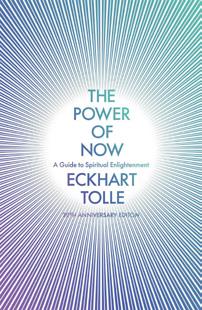
We all know the benefits of living mindfully, but, in practice, do we really know how to live more presently? Being able to transform our thinking is key to cultivating its benefits, and spiritual teacher and self-help author Eckhart Tolle shows us how we can do that.
of poems under the themes of self-discovery, mental health, and heartbreak, all addressed in the form of letters. She kindly encourages you to do the same as she leaves pages unwritten at the back of the book, ready for you to

Eat Well With Arthritis by Emily Johnson
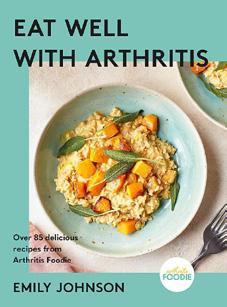
(Out 11 May)
There are many great cookbooks out there, but not many that teach you how to cook meals as someone with arthritis. Written by someone who has arthritis, with advice from an doctor and occupational therapist, this book has adaptable cooking techniques and antiinflammatory meal ideas.
The Letters I Will Never Send: Poems to Read, to Write and to Share by
 Isabella Dorta
Isabella Dorta
(Out now)
put words to paper, which you can throw away afterwards, or keep at your own discretion. This is where your healing journey begins…
Grow: Fill Your World with Plants by Robyn
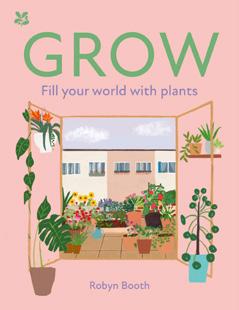 Booth
Booth
(Out now)
How can I make the most out of my houseplants? Can I benefit without a garden? If you find yourself asking these questions, Grow is the guidebook you need to live a more sustainable life. Sprinkled with advice from a senior gardener for the National Trust, you’ll become a horticultural hero in no time.
 Photograph | Blake Cheek
Photograph | Blake Cheek
“It’s not what you look at that matters; it’s what you see HENRY DAVID THOREAU
only £5.99 per month
Exclusive journaling section Includes UK delivery Cancel or pause at any time


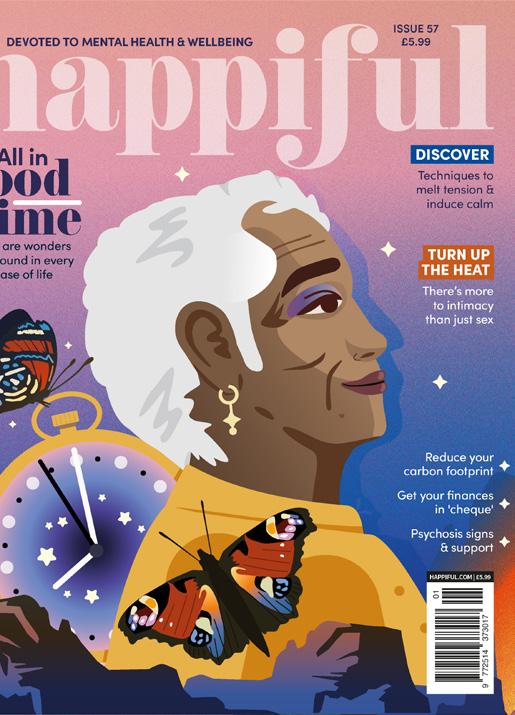
Delivering on our mission to create a happier, healthier, and more sustainable society.

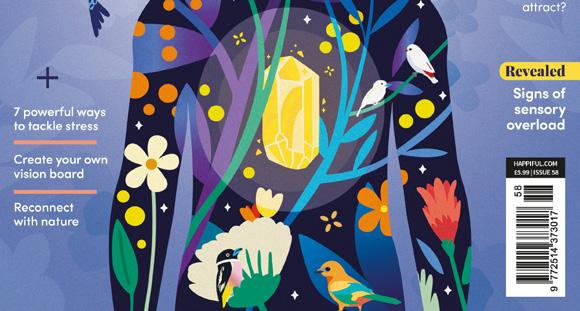
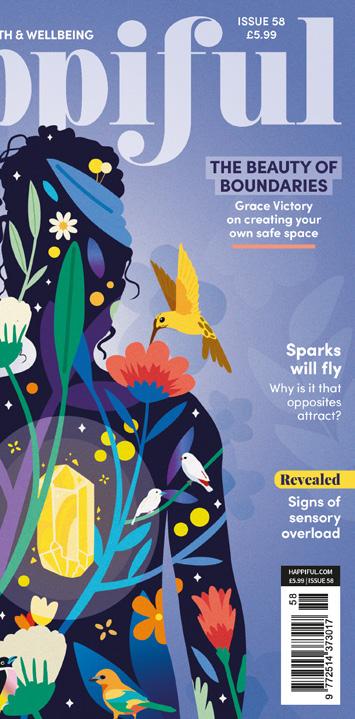


Download the free Happiful App




